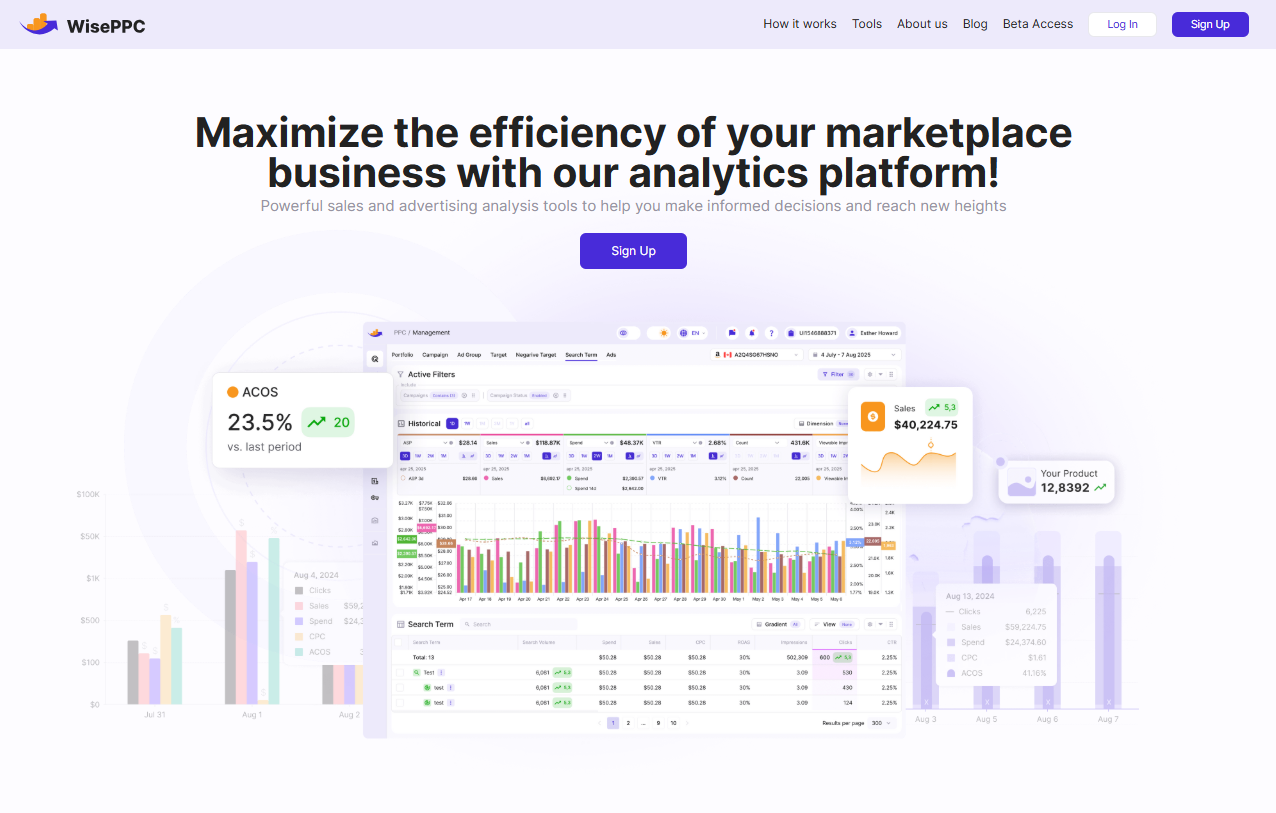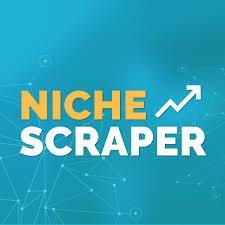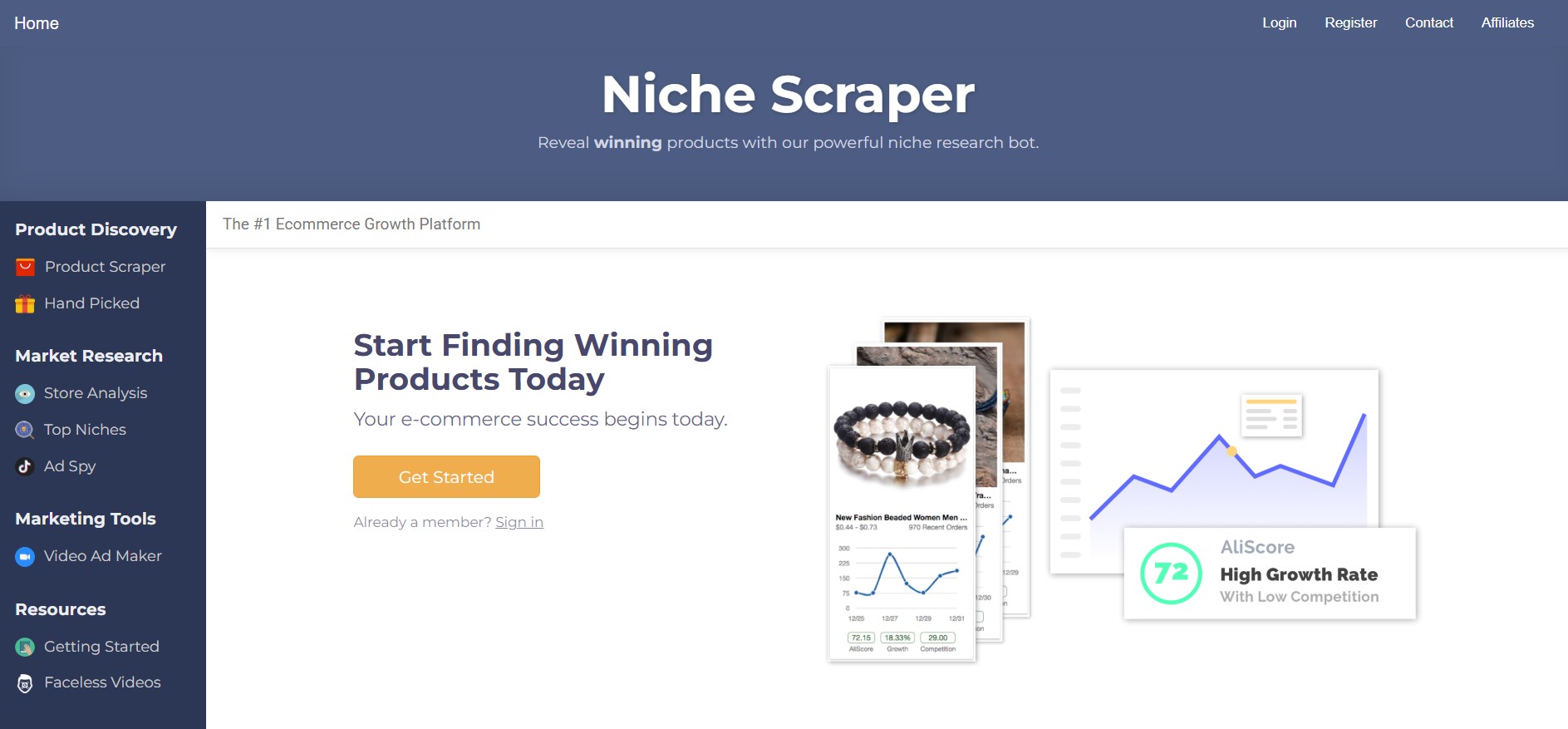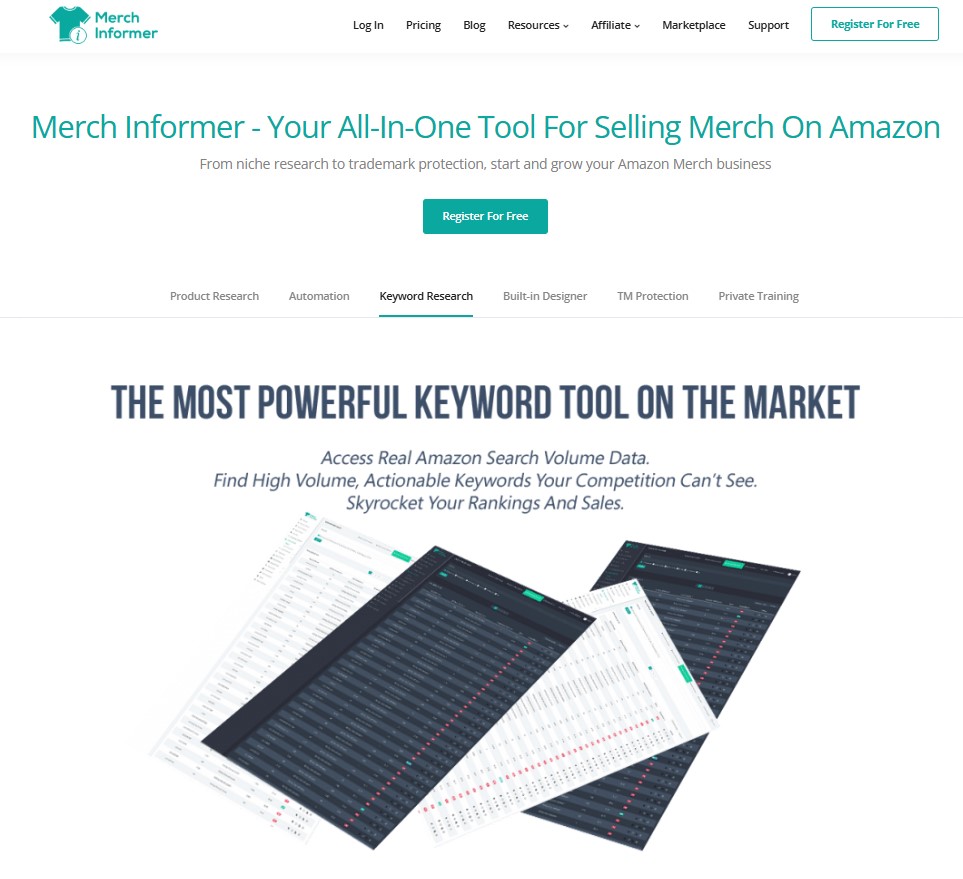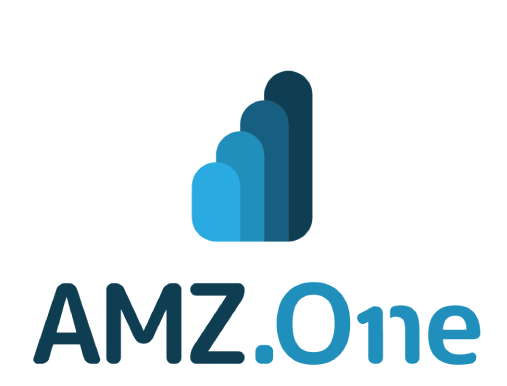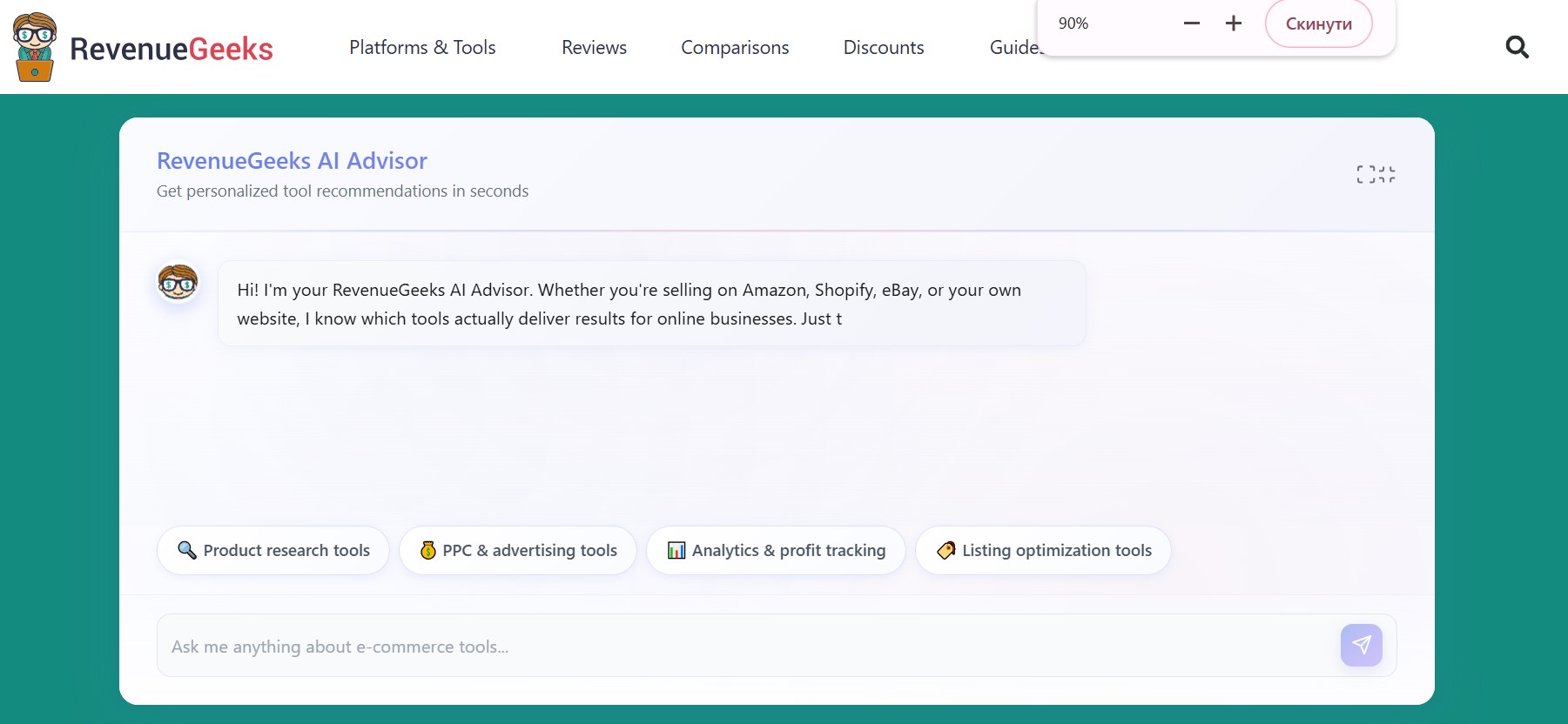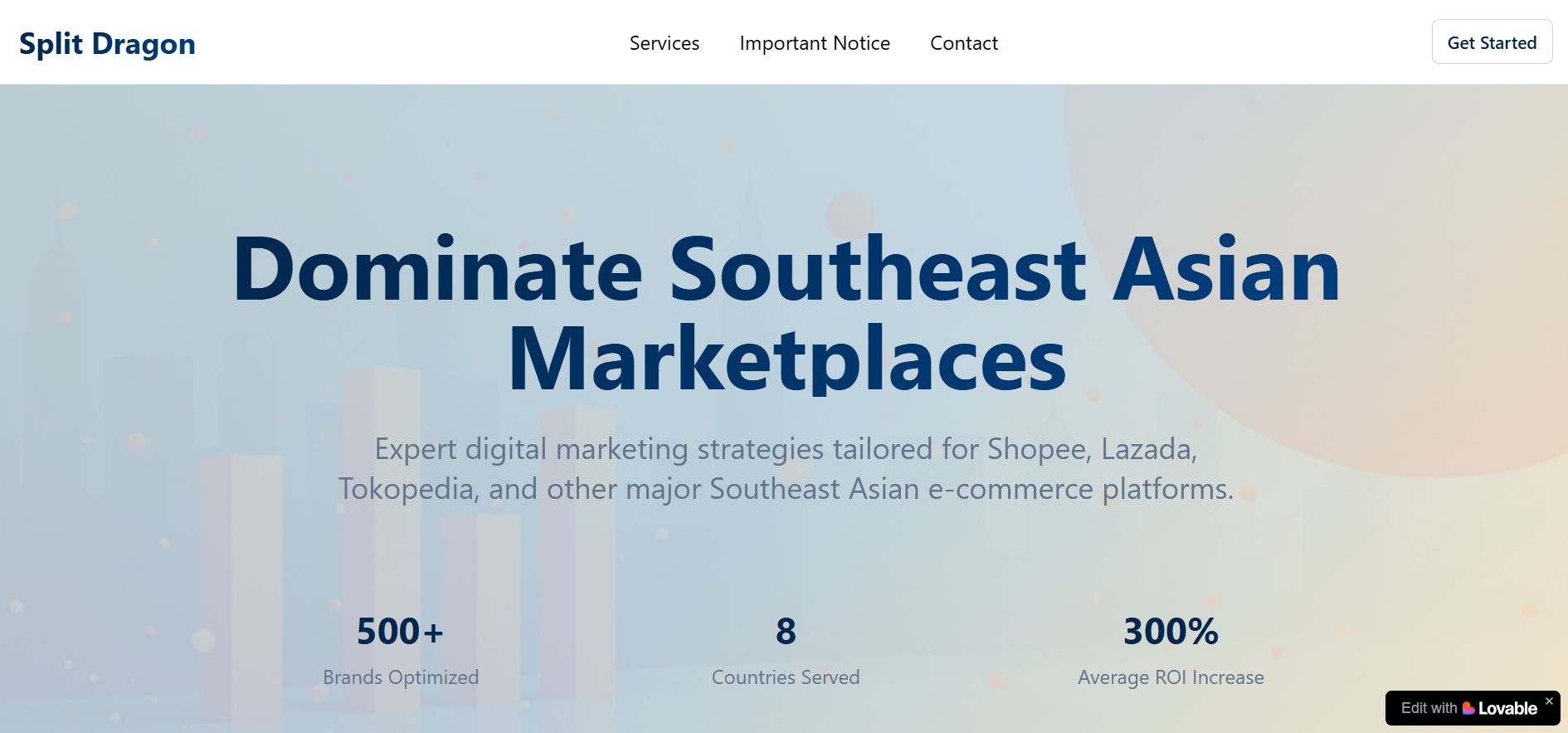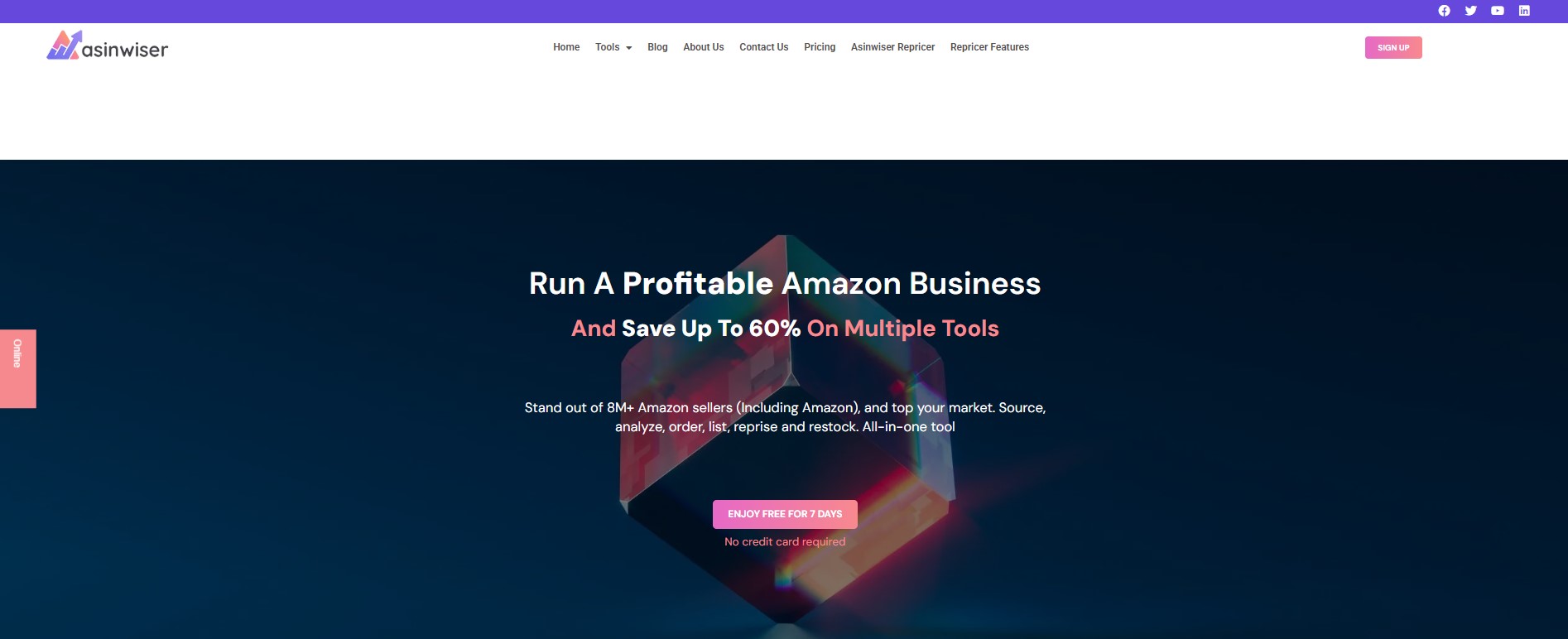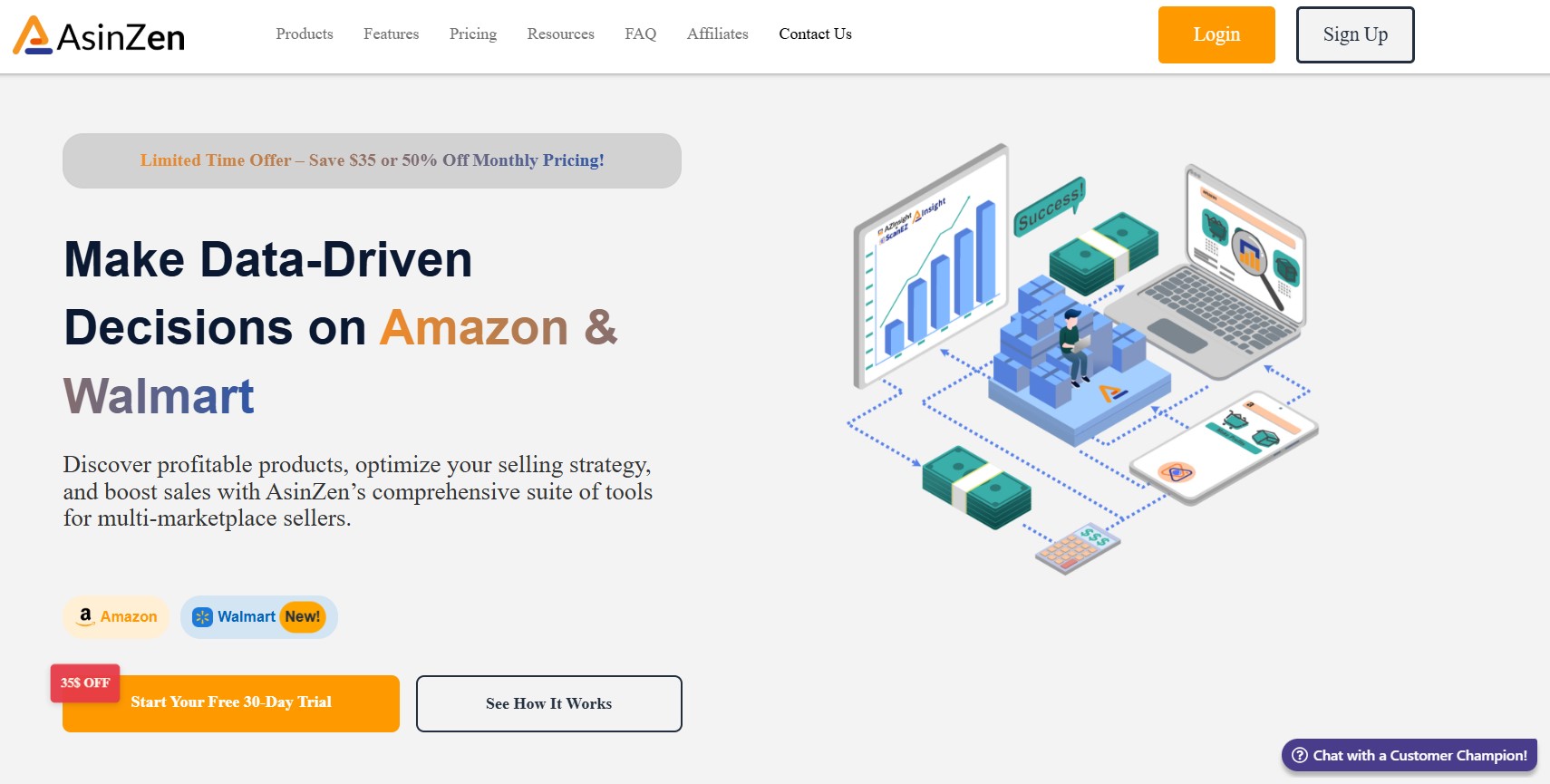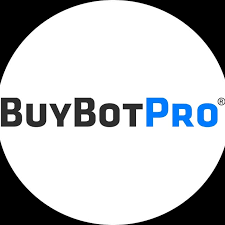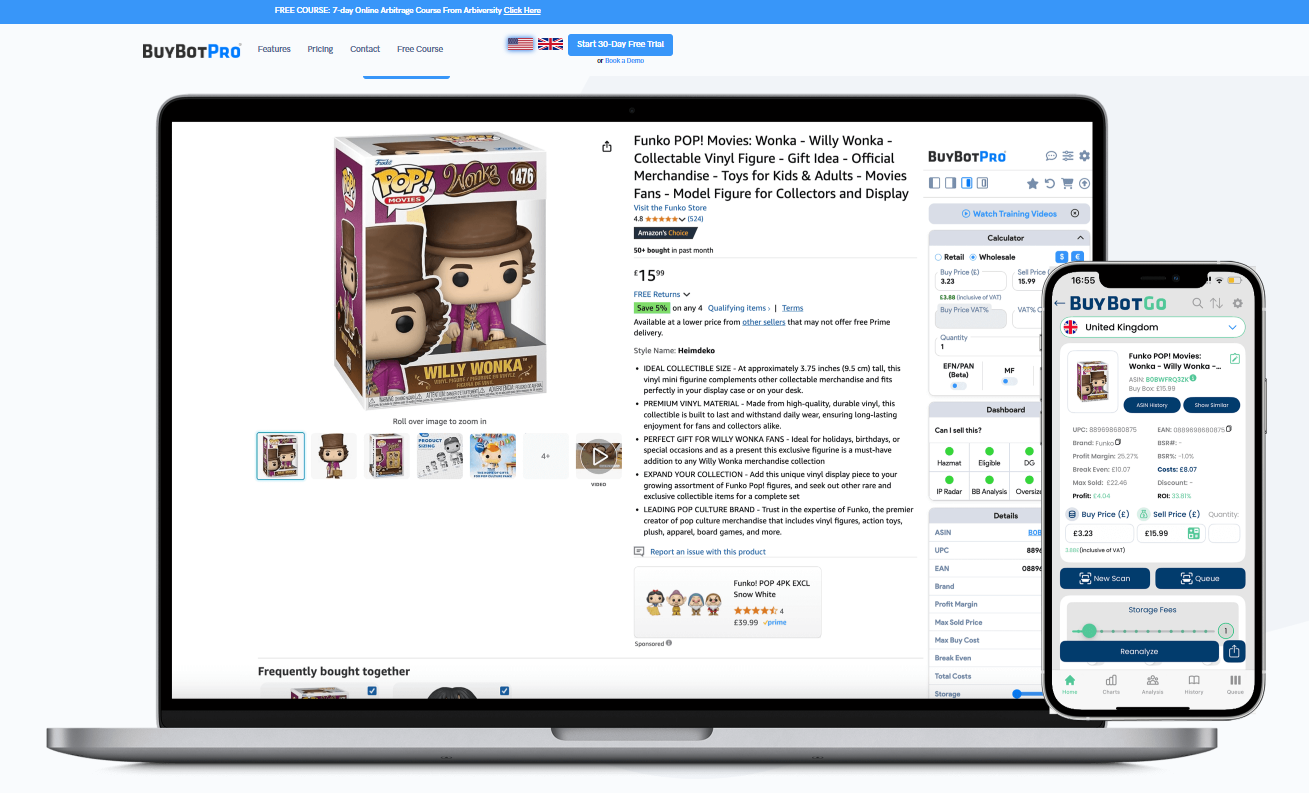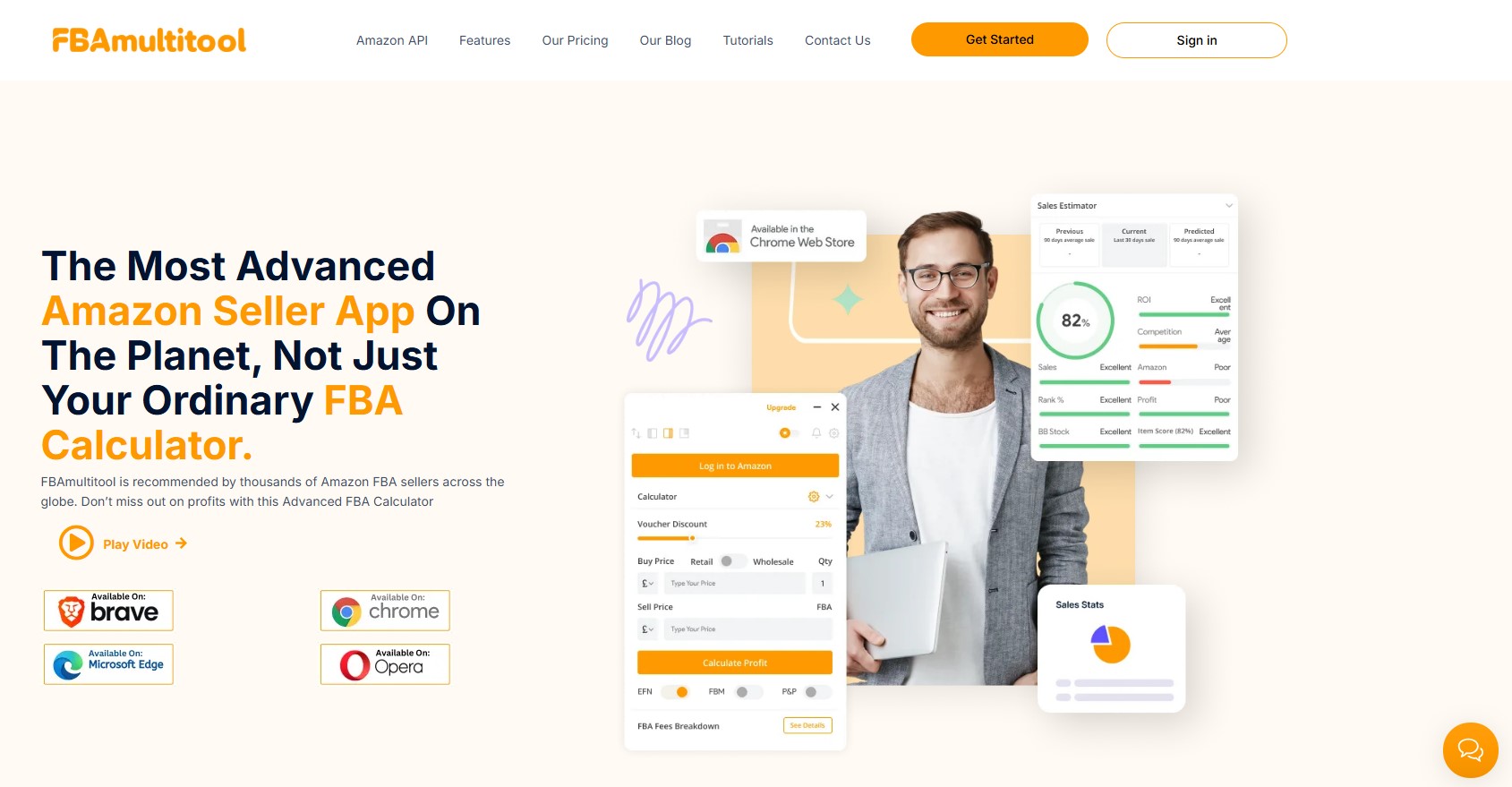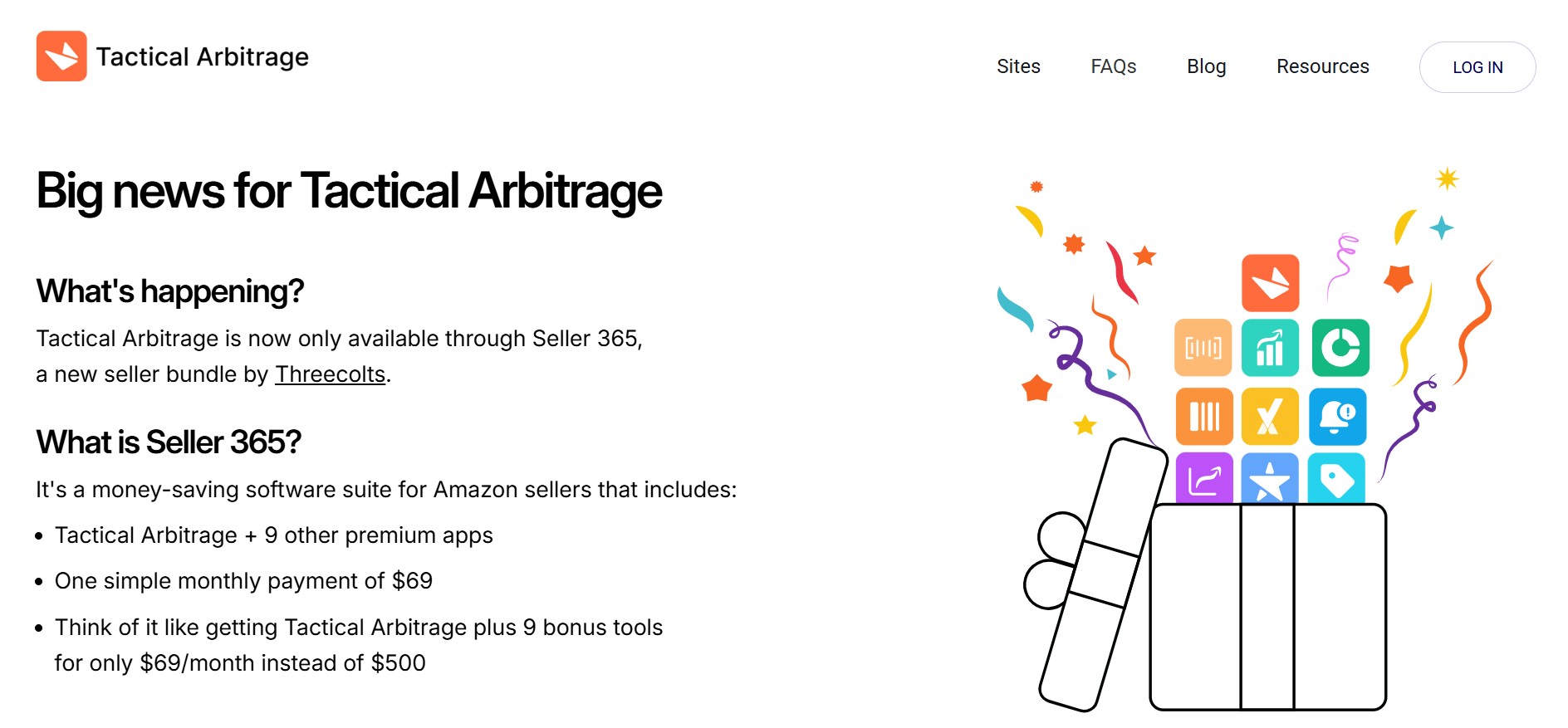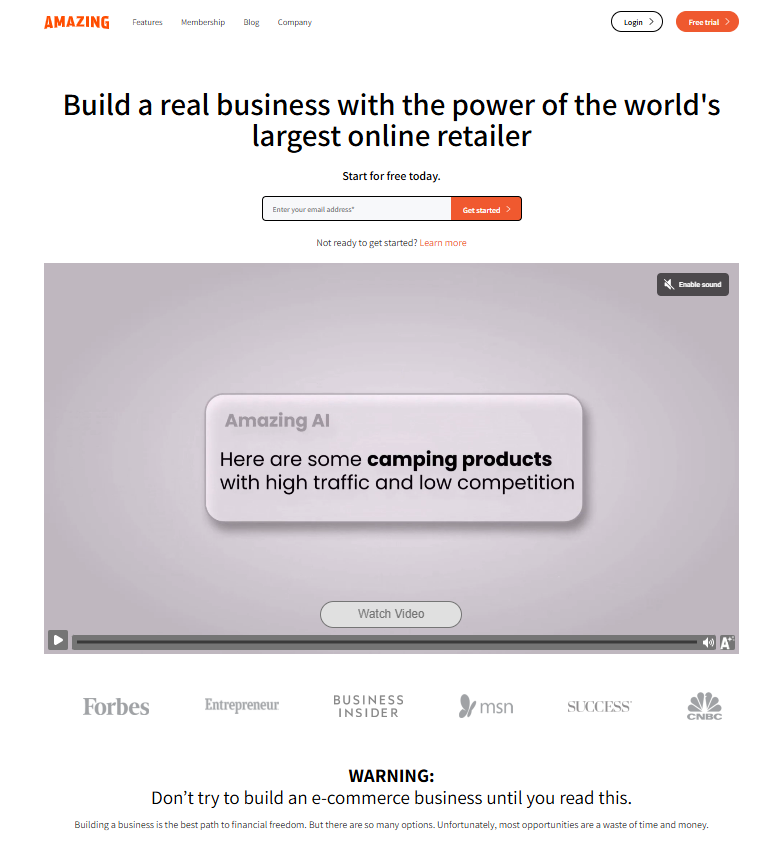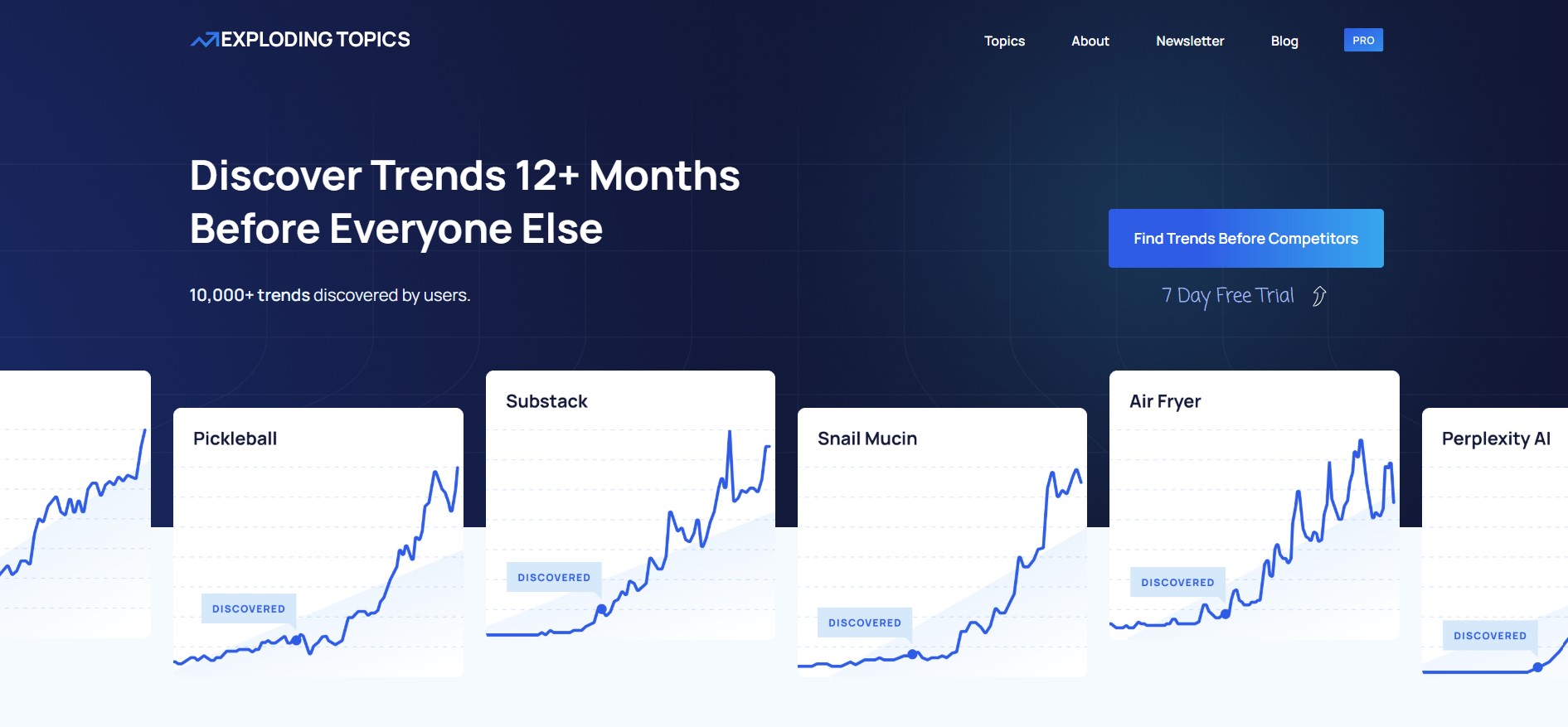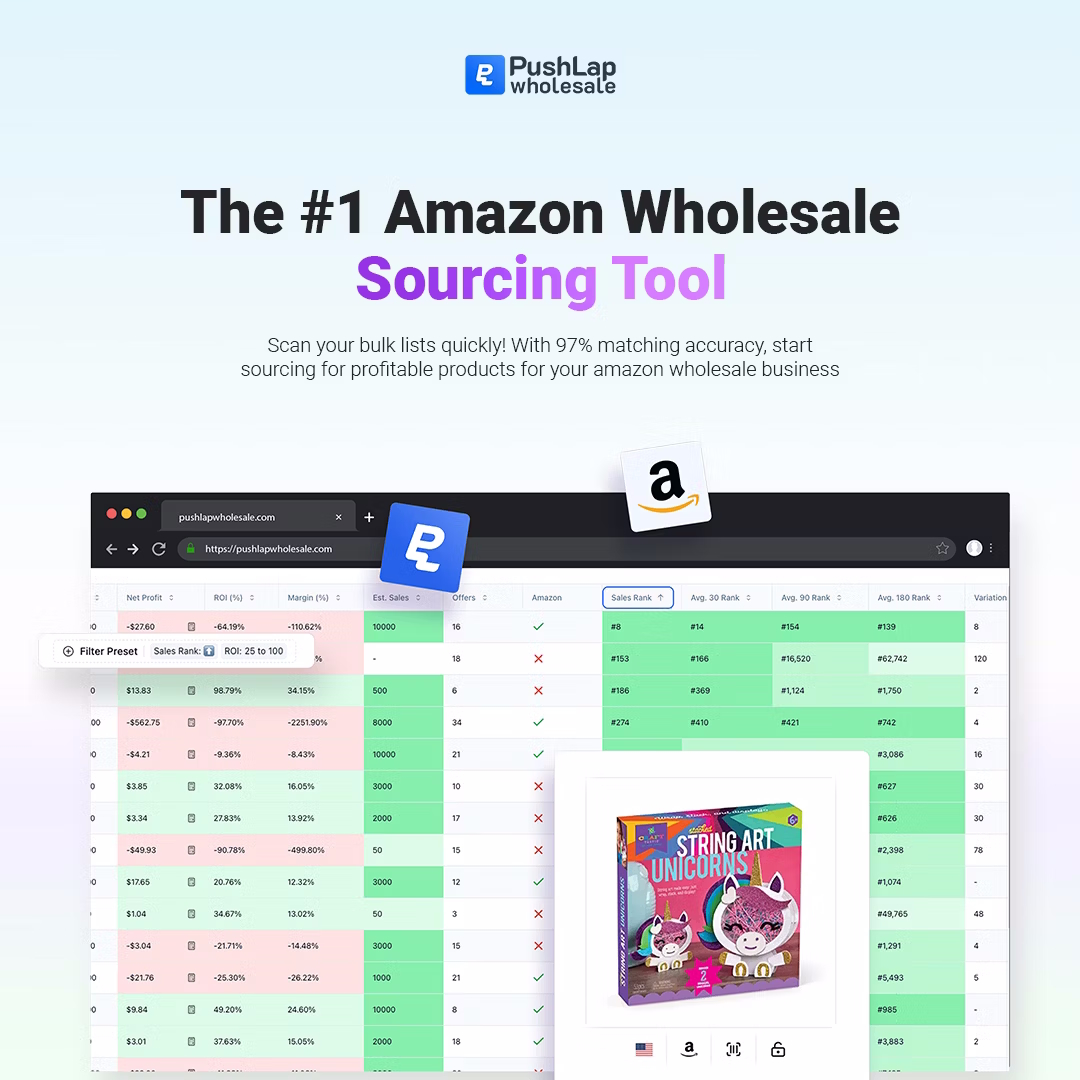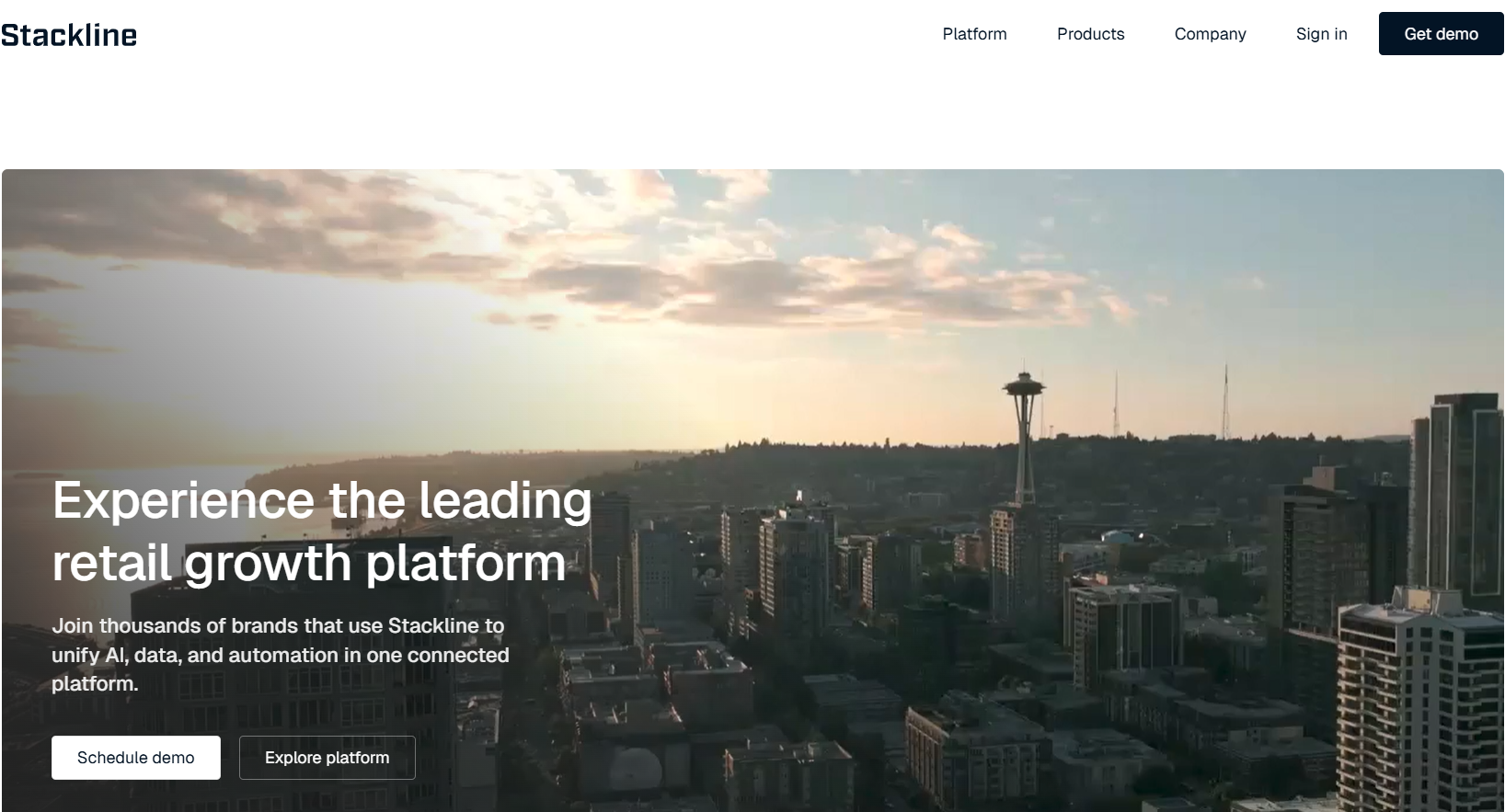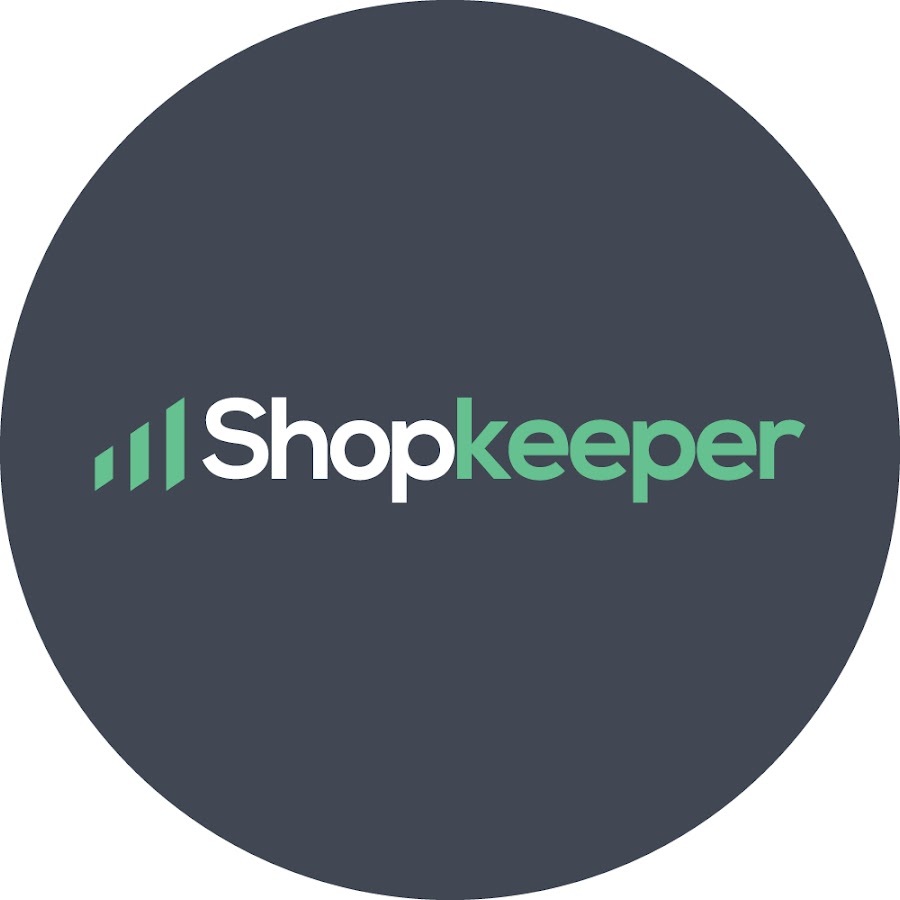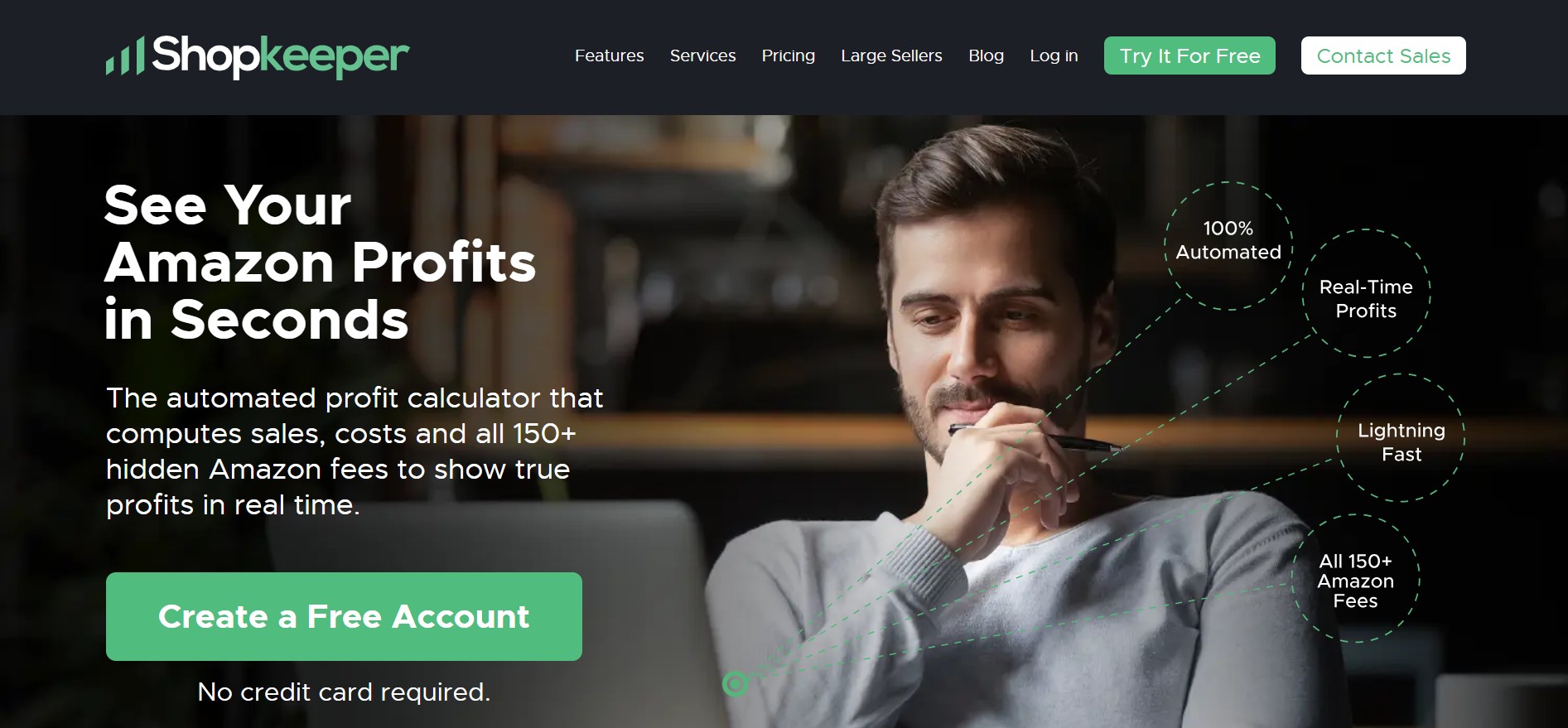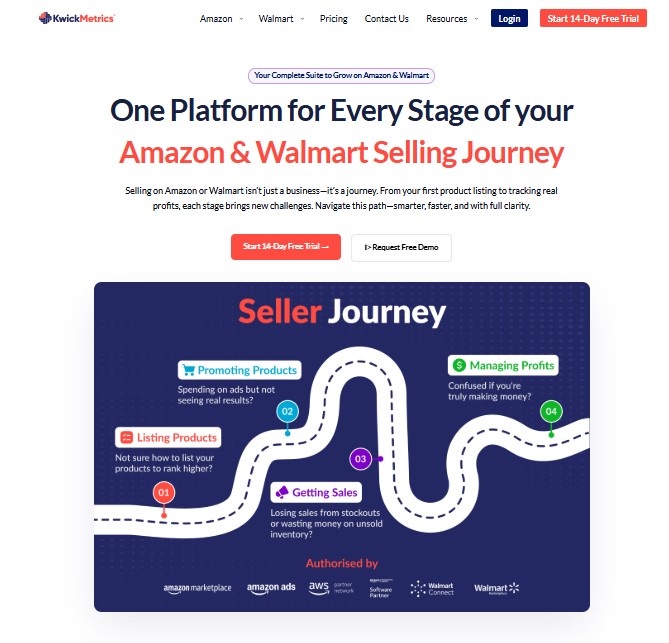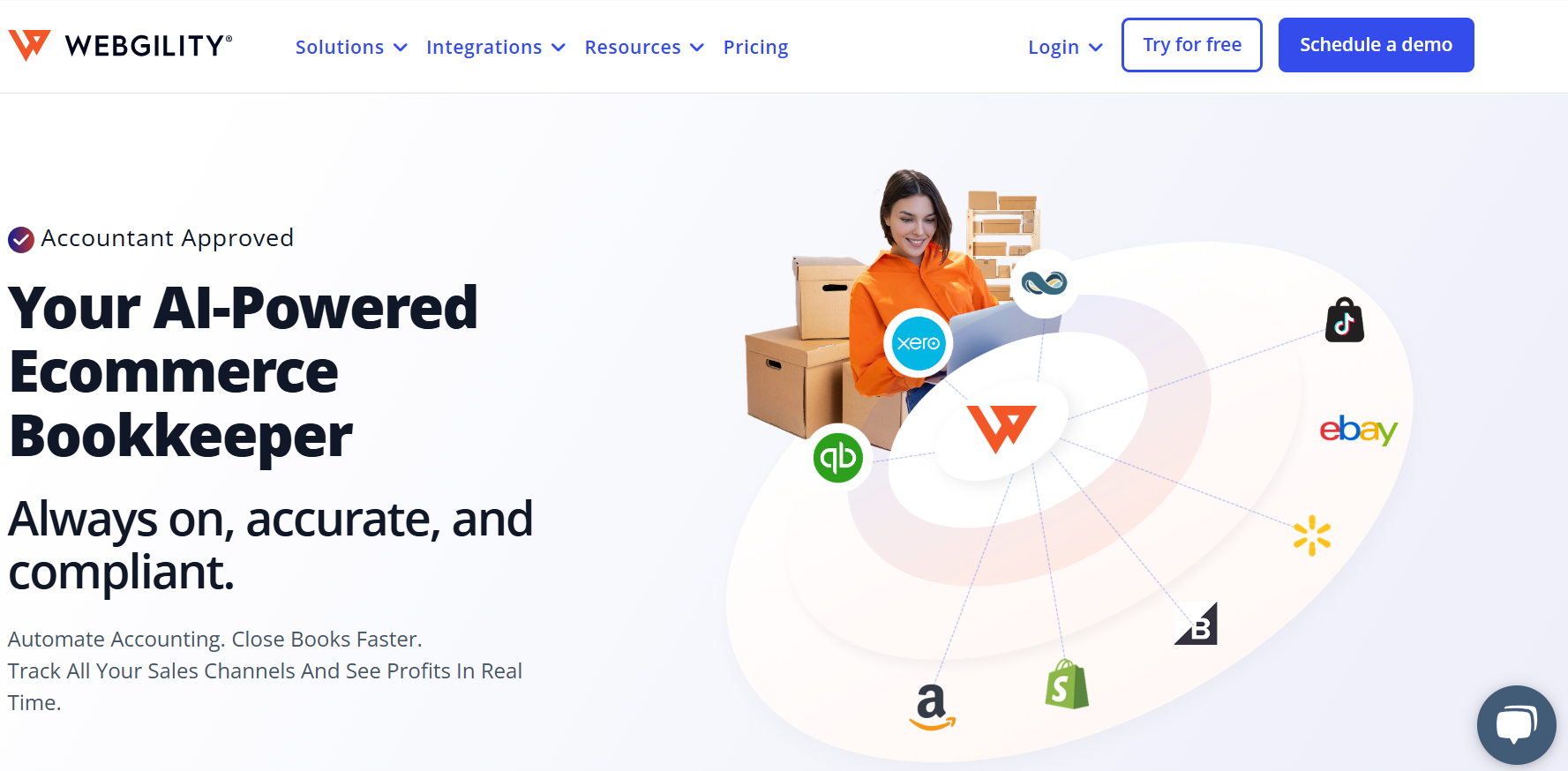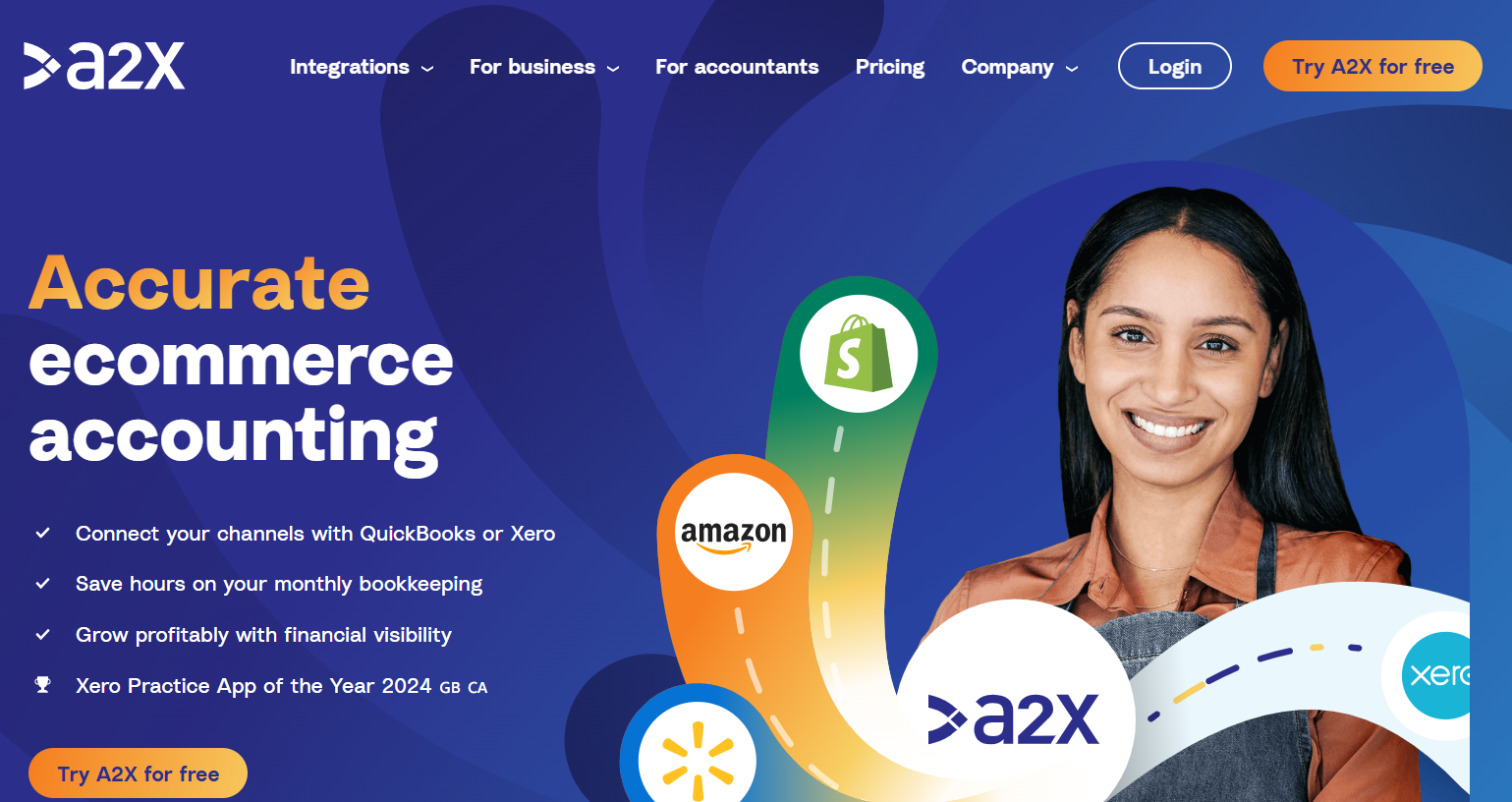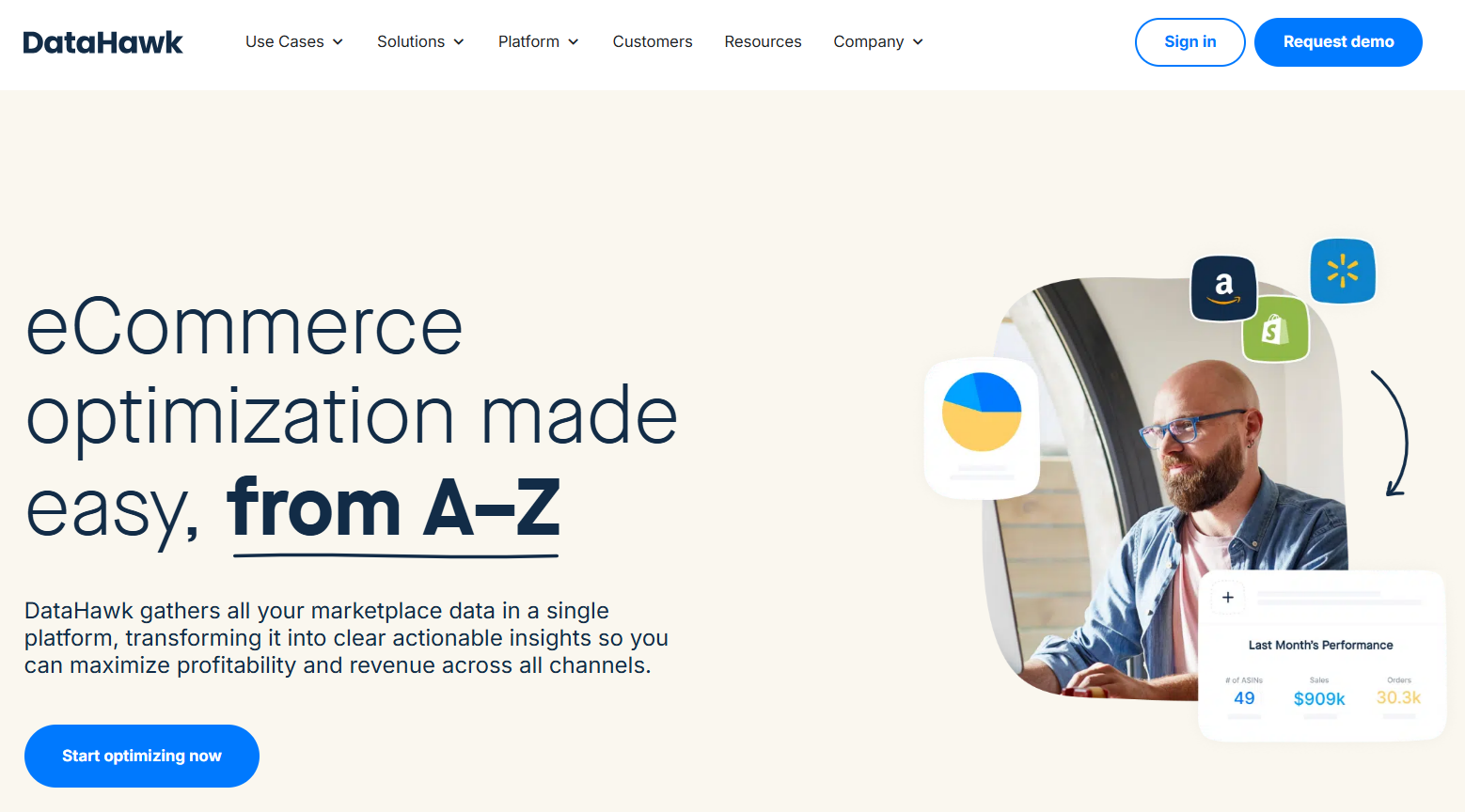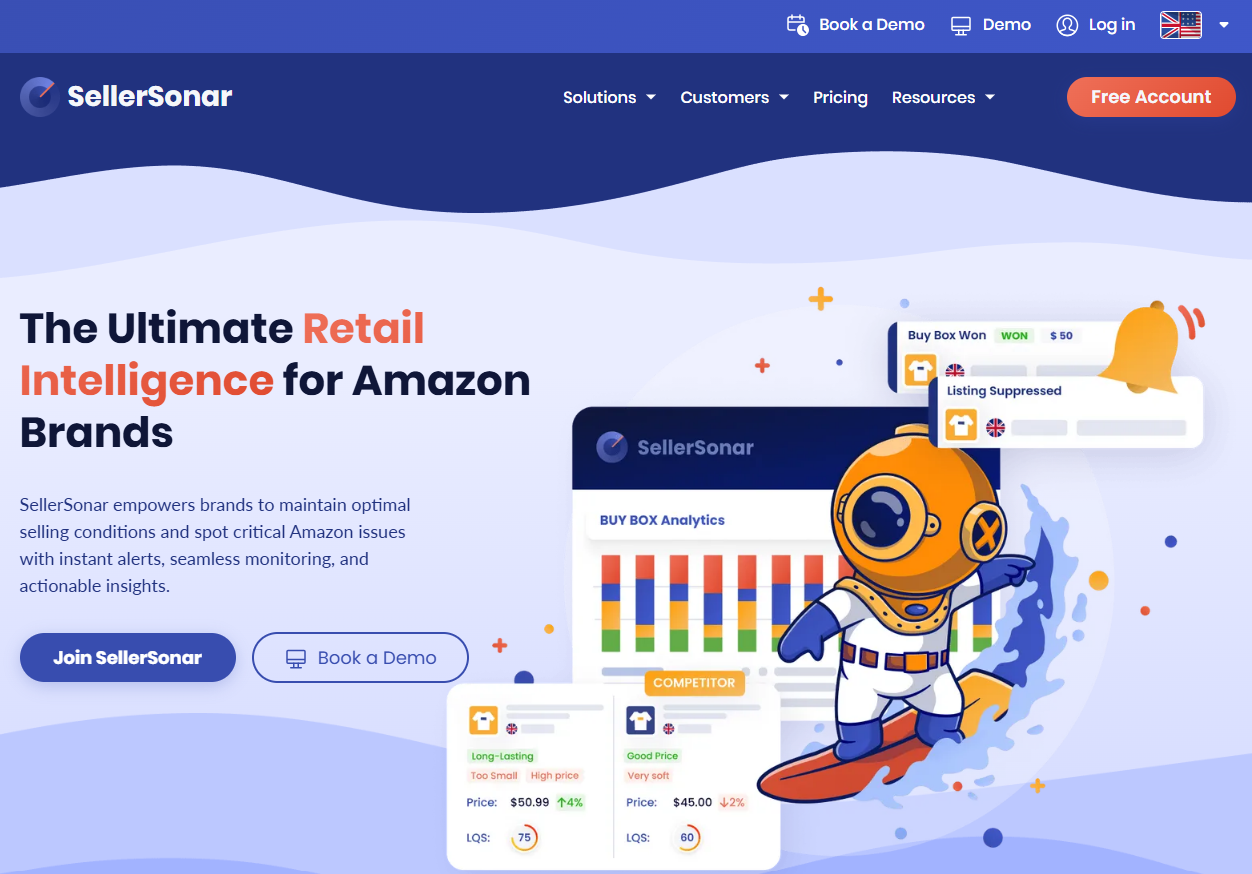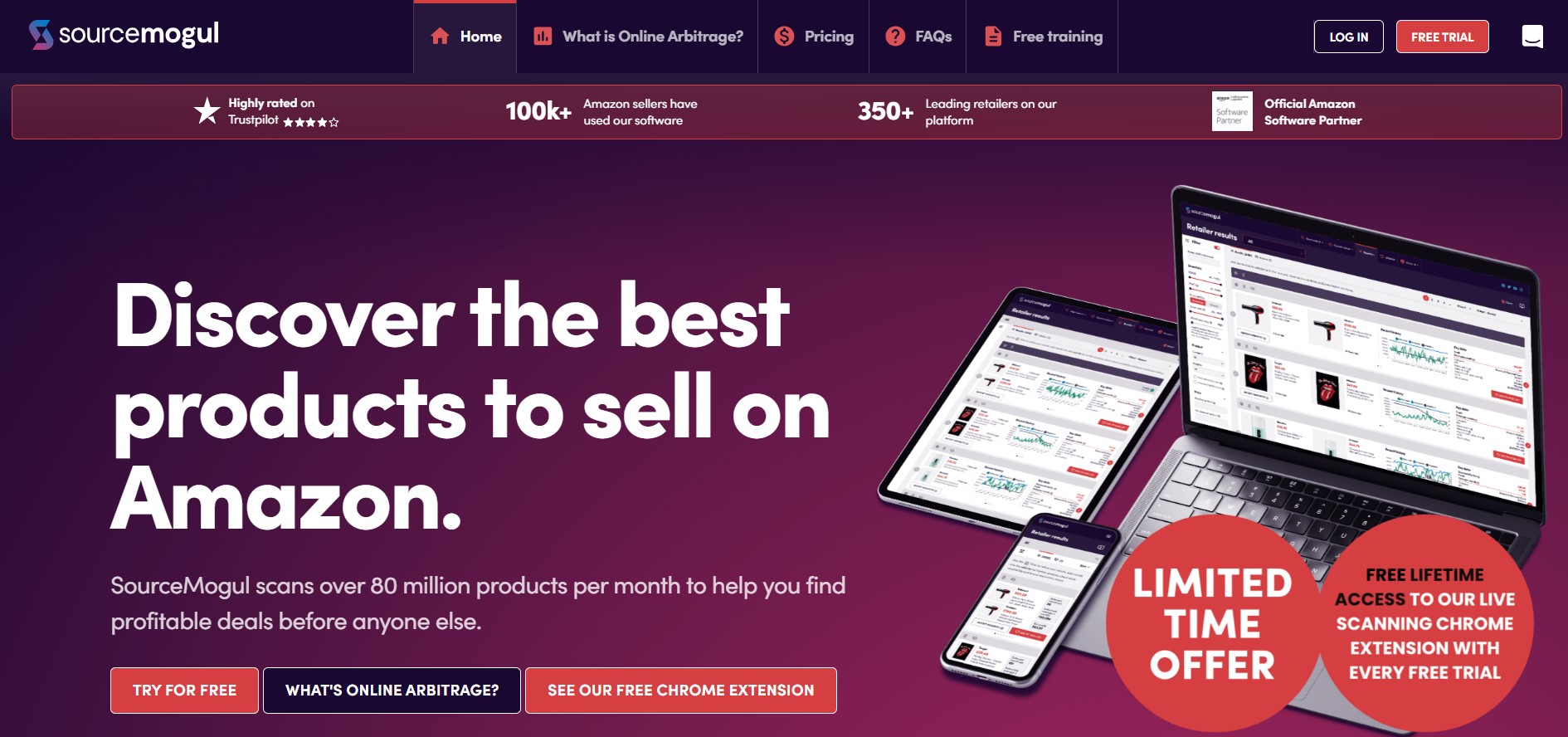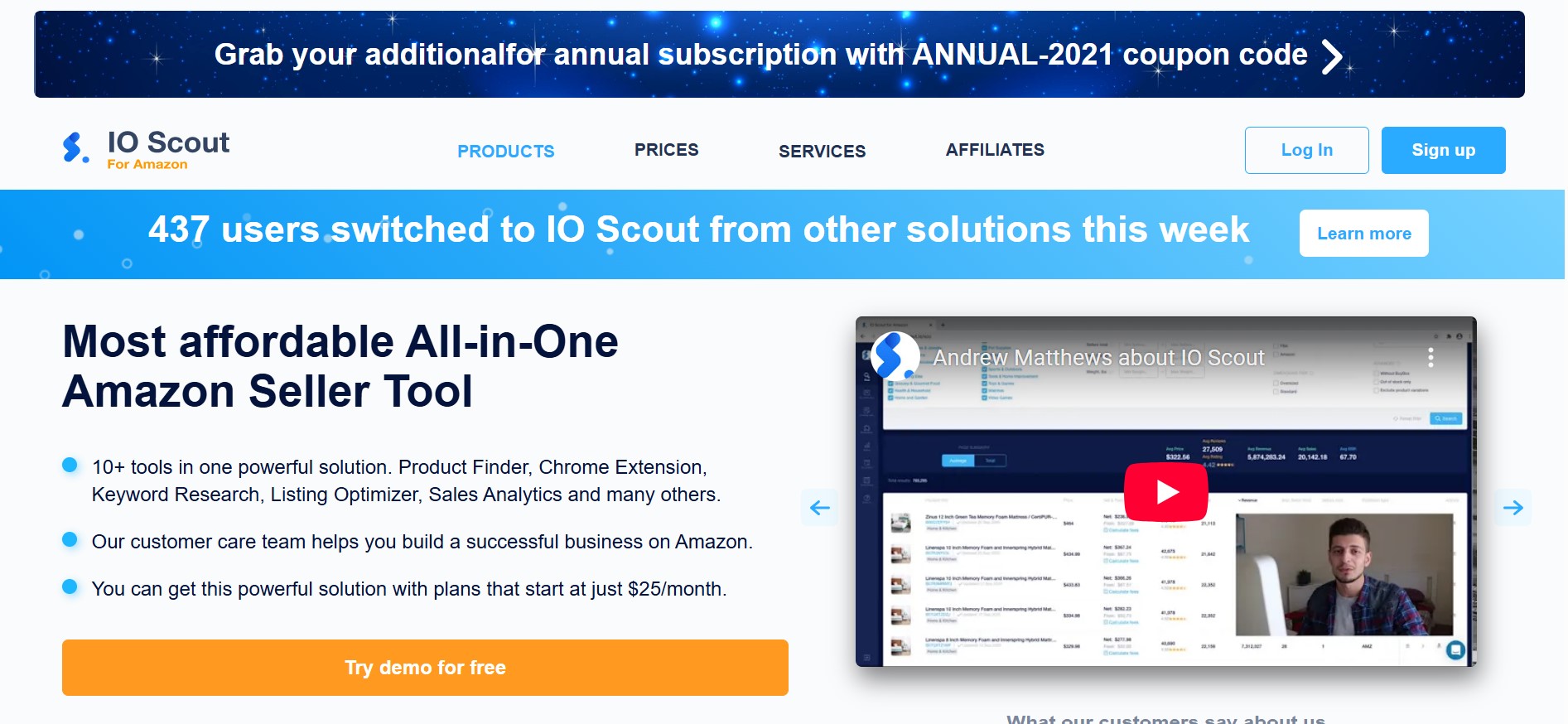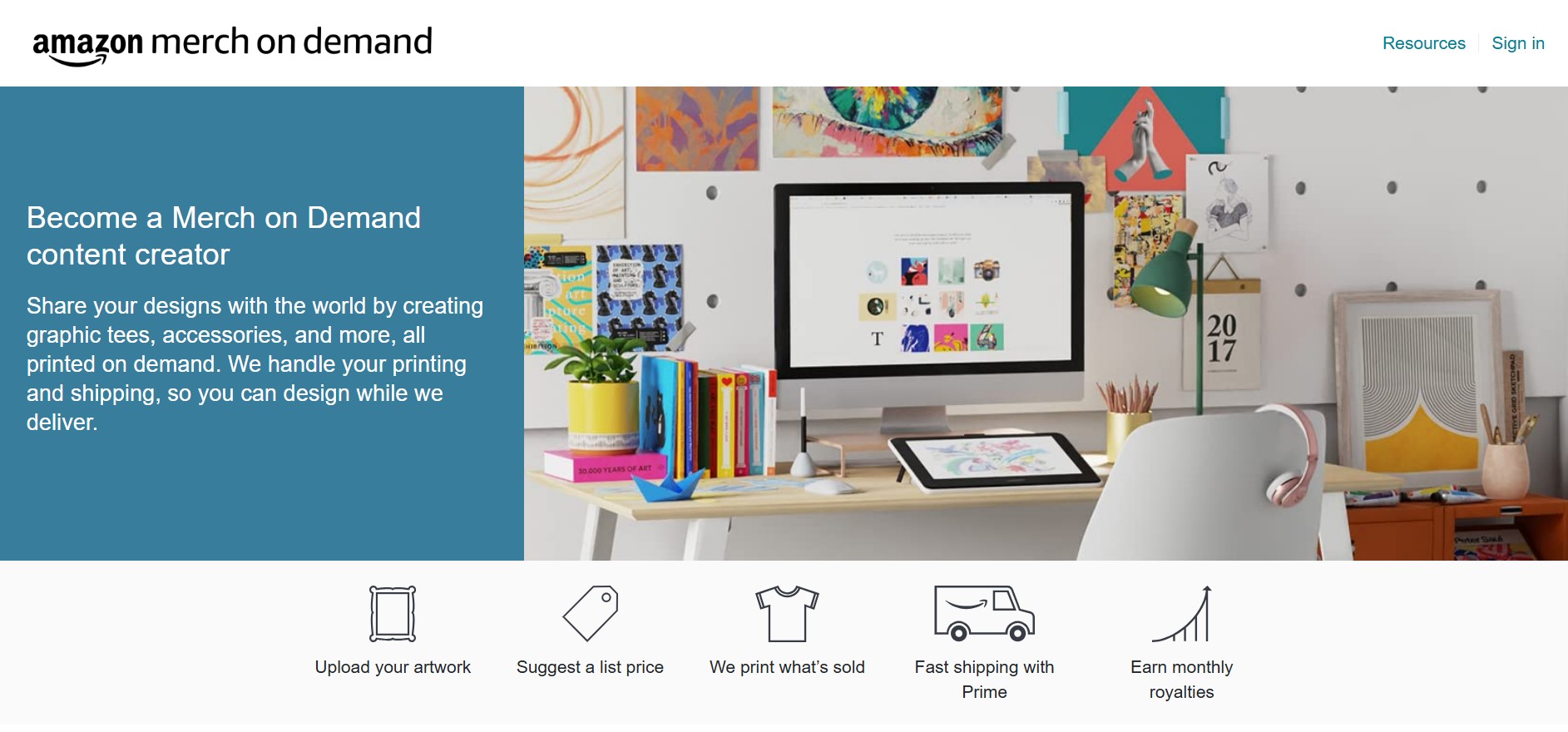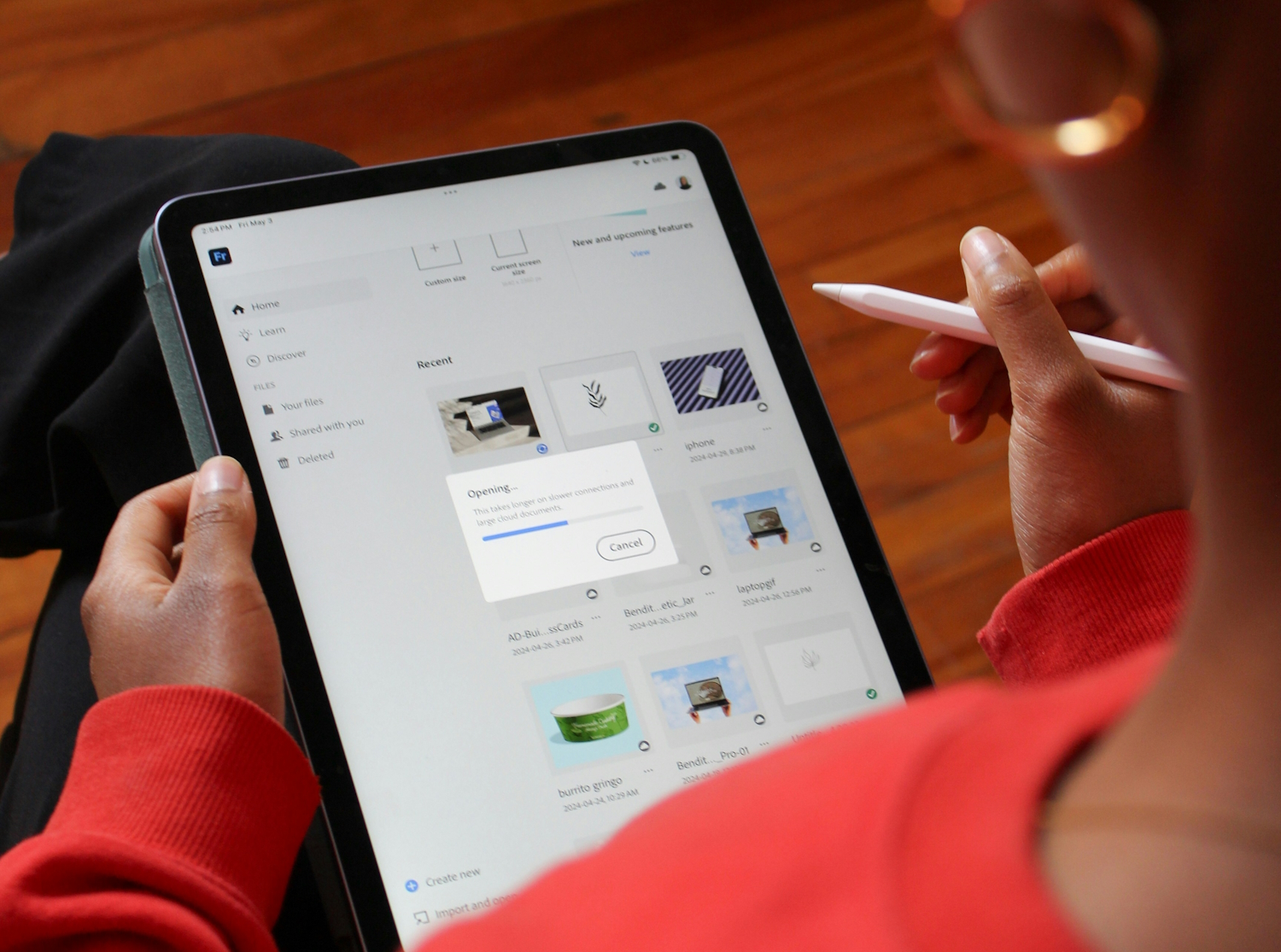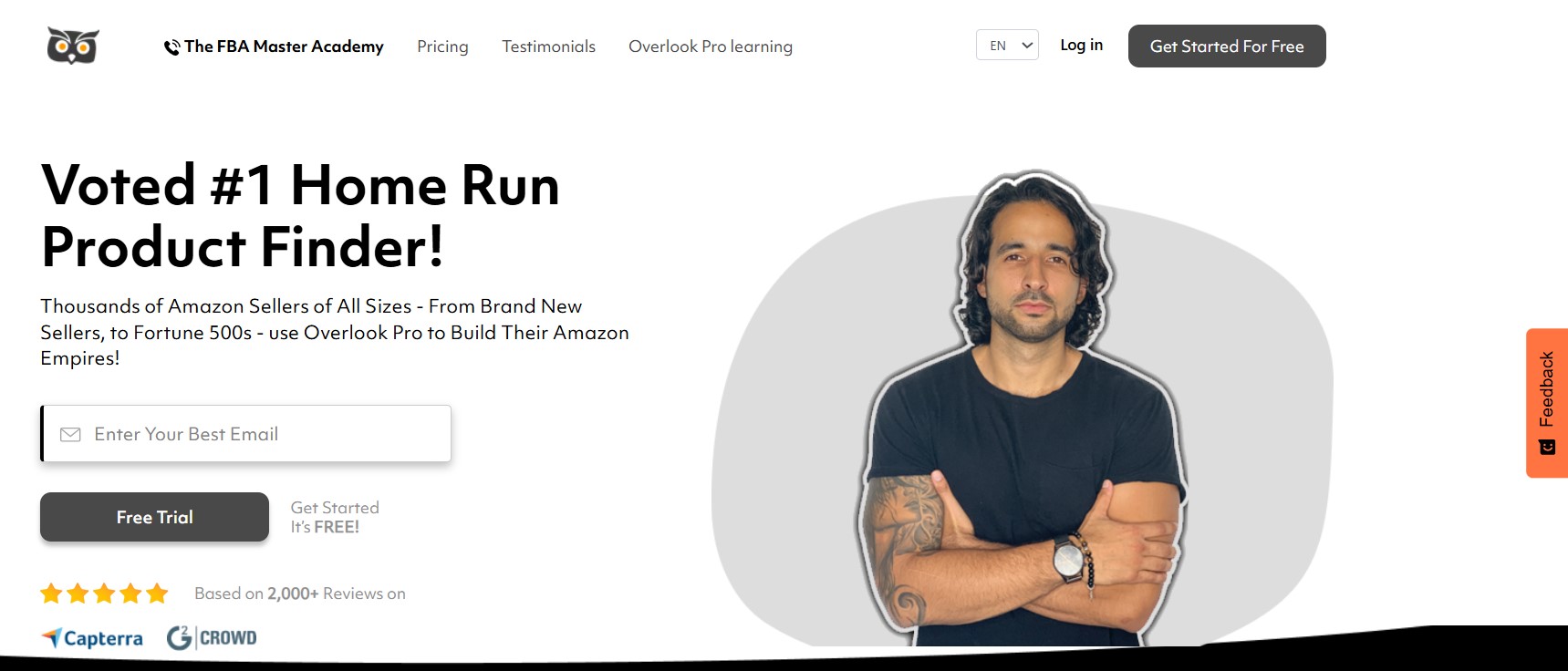If you’re in e-commerce or Amazon selling, finding the right keyword research tool is crucial to standing out. Merchant Words has been a popular choice for many, but it’s not the only tool in the game. There are several other keyword research platforms that can help you refine your listings, optimize SEO, and drive traffic. In this article, we’ll take a look at some of the best Merchant Words alternatives that could help take your business to the next level.
1. Wiseppc
At WisePPC, we offer a comprehensive platform that brings ad management, sales analytics, and inventory tracking together in one place. Whether you’re selling on Amazon, Shopify, or other marketplaces, our solution helps you optimize performance by providing real-time insights into your campaigns, enabling bulk updates for faster action, and using advanced analytics to track trends and performance. By simplifying complex processes, we give you a clear view of what’s driving growth and efficiency in your business.
What sets us apart is our focus on flexibility and automation. We enable you to make data-driven decisions with ease, eliminating manual tasks while improving campaign management. With features like inventory forecasting, multi-account reporting, and ad optimization, we help you scale faster while keeping operations smooth. No matter the size of your business, from solo sellers to large teams, we provide the tools to stay competitive and make smarter decisions.
For sellers exploring MerchantWords alternatives, we offers a performance-focused solution that goes beyond keyword research. By integrating campaign data, inventory metrics, and sales trends into a single platform, we help businesses not only understand what customers are searching for-but also how those searches convert into sales and long-term growth.
Key Highlights:
- Advanced analytics for sales and advertising insights
- Bulk action features to update campaigns and targets efficiently
- Long-term data storage for trend analysis and decision-making
- Real-time inventory tracking and forecasting to manage stock effectively
- Seamless integration with Amazon, Shopify, and other major platforms
Who it’s best for:
- New sellers who need an intuitive platform to get started
- Growing brands looking for advanced tools to handle increased complexity
- Agencies and larger teams requiring customizable solutions and detailed analytics
Contact and Social Media Information:
- Website: wiseppc.com
- LinkedIn: www.linkedin.com/company/wiseppc
- Instagram: www.instagram.com/wiseppc
- Facebook: www.facebook.com/people/Wise-PPC/61573154427547
2. Niche Scraper
Niche Scraper is a powerful tool designed to help e-commerce sellers, particularly in the dropshipping space, identify trending products, analyze competition, and find profitable niches. With its product scraper, users can access a wide range of top-selling products from platforms like AliExpress and Shopify, making it easier to find products with potential for high sales. The tool also provides market research capabilities, allowing sellers to keep track of top niches and monitor ad strategies for smarter decision-making. Whether you are looking to enter a new market or simply find the next hot product, Niche Scraper offers the insights to guide your strategy. Beyond just product research, Niche Scraper also includes tools for store analysis and ad spying, allowing users to understand what’s working for other sellers and replicate successful strategies. It helps streamline the process of niche selection, making it less overwhelming by providing data-backed insights that focus on real business growth. By offering tools that cover everything from market research to ad strategies, Niche Scraper is a great resource for anyone looking to gain a competitive edge in e-commerce.
Key Highlights:
- Product scraper for discovering trending products across AliExpress and Shopify
- Market research tools to identify profitable niches
- Store analysis features for monitoring competition
- Ad spy to analyze competitors’ successful advertising strategies
- Ability to track top-selling products and monitor key metrics
Services:
- E-commerce entrepreneurs looking for data-driven product and niche insights
- Dropshipping businesses in need of competitive research tools
- Sellers looking to stay ahead of the market with real-time trends and strategies
Contact and Social Media Information:
- Website: nichescraper.com
3. Merch Informer
Merch Informer is a versatile tool set designed for anyone looking to grow their business on Merch by Amazon. The platform offers everything from niche research to trademark protection, making it a one-stop-shop for sellers on Amazon’s merch platform. Merch Informer simplifies the process of finding profitable niches, optimizing listings, and tracking trademarks. It also features a powerful product research tool that helps users spot trends and potential opportunities before they become saturated. With tools that streamline the listing process, Merch Informer makes managing a Merch business more efficient, allowing sellers to focus on what matters most-creating and selling great designs. What makes Merch Informer stand out is its combination of ease of use and depth of features. Sellers can automate key aspects of their business, such as listing designs and tracking trademarks, all within one platform. Additionally, it offers resources for graphic design, making it easier for sellers to create unique, eye-catching products without needing external tools. By organizing all aspects of Merch by Amazon business under one roof, Merch Informer provides the necessary tools to streamline workflows and maximize success.
Key Highlights:
- Niche research and product trend spotting
- Trademark protection features to avoid legal issues
- Bulk listing automation for saving time and effort
- Graphic design tools and vector packs for creating designs
- Archive access to historical data for trend analysis
Services:
- Merch by Amazon sellers looking for an all-in-one platform
- Sellers wanting to automate their business processes
- Entrepreneurs who want to streamline their product research and design creation
Contact and Social Media Information:
- Website: merchinformer.com
4. Helium 10
Helium 10 is a comprehensive software suite built to help Amazon sellers optimize their businesses. It provides tools for product research, keyword tracking, listing optimization, and competitor analysis. The platform’s powerful analytics help sellers discover high-demand products, optimize listings for better visibility, and track keyword rankings to increase their chances of being found by potential customers. Additionally, Helium 10 offers a range of advertising and operations tools to help streamline campaigns and manage inventory. With its all-in-one approach, Helium 10 is designed to support sellers at every stage of their journey, from startup to scaling a successful business. One of the standout features of Helium 10 is its use of AI-powered tools that simplify decision-making. The platform offers real-time performance tracking, automated keyword suggestions, and actionable insights that help users optimize their Amazon listings. Whether you’re looking to expand your brand on Amazon or manage your product catalog more effectively, Helium 10 offers the tools to help you achieve those goals. Its ability to integrate across multiple platforms, including Walmart and TikTok, makes it a flexible solution for expanding e-commerce businesses.
Key Highlights:
- Comprehensive suite for product research, keyword tracking, and listing optimization
- AI-powered tools for better decision-making and automation
- Real-time performance tracking for optimized ad campaigns
- Competitor analysis features for staying ahead of the market
- Integration with Amazon, Walmart, and TikTok for cross-platform selling
Services:
- Amazon sellers looking for a comprehensive software solution
- E-commerce businesses aiming to scale and optimize operations
- Entrepreneurs seeking real-time insights and automated keyword tracking
Contact and Social Media Information:
- Website: helium10.com
- E-mail: [email protected]
- LinkedIn: www.linkedin.com/company/helium10
- Instagram: www.instagram.com/helium10software
- Twitter: x.com/H10Software
- Facebook: www.facebook.com/Helium10Software
5. AMZ.One
AMZ.One offers a suite of tools specifically designed to help Amazon sellers manage and optimize their businesses. Among its key features are keyword rank tracking, sales tracking, and product alerts, which allow users to monitor their performance and stay ahead of the competition. The platform also offers tools for keyword research and tracking, helping sellers identify high-performing keywords to boost visibility. With its user-friendly interface, AMZ.One simplifies complex processes like competitor monitoring and listing optimization. It’s an affordable solution for those who want to improve their Amazon sales without investing in costly, complex software. AMZ.One stands out for its simplicity and efficiency. The platform offers a range of tools for tracking product rankings, managing negative reviews, and analyzing sales performance-all in one place. Its keyword rank tracker, for example, provides daily updates, allowing sellers to monitor keyword performance and make adjustments as needed. With its focus on practicality and affordability, AMZ.One is a great choice for sellers looking to improve their Amazon business in a straightforward, cost-effective way.
Key Highlights:
- Keyword rank tracking for daily updates on keyword performance
- Sales tracking to monitor product performance over time
- Negative review notification for quick response to customer feedback
- On-page analyzer to optimize product listings for Amazon’s search algorithm
- Product alerts to stay on top of competitors and product changes
Services:
- Amazon sellers looking for an affordable, all-in-one tool
- Sellers needing to track keyword rankings and sales performance
- Entrepreneurs who want to optimize listings and manage negative reviews
Contact and Social Media Information:
- Website: amz.one
- E-mail: [email protected]
- Linkedin: www.linkedin.com/in/amzone
- Twitter: www.instagram.com/amz.one.business
- Facebook: www.facebook.com/TheAMZOne
6. AMZScout
AMZScout is a product research tool designed for Amazon sellers, offering an array of features to help with product discovery, keyword research, and competition analysis. With its AI-powered extension, users can quickly find profitable products, analyze reviews, and optimize listings for better visibility. It helps sellers track the best-selling products across different niches and market categories, giving them the insights they need to make data-driven decisions. The tool’s user-friendly interface ensures that both new and experienced sellers can easily navigate and apply the features to grow their Amazon businesses. What sets AMZScout apart is its comprehensive set of tools aimed at streamlining the product research process. The platform provides sellers with easy access to the latest trends, hot products, and supplier information from Alibaba. Its keyword and product ranking tools allow users to monitor and improve their product listings, while the trend reports and data archives give insights into past performance. All of these elements work together to help sellers make more informed decisions and scale their businesses more effectively on Amazon.
Key Highlights:
- AI-powered product and keyword research tools
- Real-time trend reports and data archives
- Easy-to-use interface for both beginners and seasoned sellers
- Integration with Alibaba for supplier discovery
- Keyword and listing optimization tools for improved Amazon performance
Services:
- Amazon sellers seeking efficient product and keyword research tools
- Entrepreneurs new to the Amazon marketplace
- Experienced sellers looking to optimize listings and track trends
Contact and Social Media Information:
- Website: amzscout.net
- Phone: +1 908 428 4921
- E-mail: [email protected]
- Twitter: x.com/AmzScout
- Facebook: www.facebook.com/amzscoutcrew
7. RevenueGeeks
RevenueGeeks provides a platform with recommendations for Amazon and e-commerce sellers, helping them find the right tools to grow their businesses. Through their AI Advisor, users receive personalized recommendations based on their specific needs and goals. RevenueGeeks covers a wide range of tools, including those for product research, PPC management, and analytics. The platform’s focus is on guiding users through the e-commerce landscape, ensuring they have access to the best resources for maximizing sales and profitability. What makes RevenueGeeks stand out is its holistic approach to e-commerce. It doesn’t just provide tools-it helps users understand which ones will work best for their specific business models. The platform is user-centric, with features designed to simplify the process of selecting the right tools. Whether you’re focused on Amazon or other e-commerce platforms, RevenueGeeks offers the right mix of information and solutions to help your business thrive in a competitive marketplace.
Key Highlights:
- Personalized tool recommendations through AI-powered advisor
- Wide selection of tools for product research, PPC, and analytics
- E-commerce focused, providing tools tailored to different business needs
- Resources to help users navigate the e-commerce landscape
Services:
- E-commerce sellers looking for personalized tool recommendations
- Amazon and multi-platform sellers in need of integrated solutions
- New sellers who need guidance on which tools will help their business grow
Contact and Social Media Information:
- Website: revenuegeeks.com
- Address: 546w W 44th St, New York, NY 10036, USA
- E-mail: [email protected]
- Instagram: www.instagram.com/revenuegeeks
- Twitter: x.com/RevenueGeekz
- Facebook: www.facebook.com/RevenueGeekz
8. Jungle Scout
Jungle Scout is an all-in-one platform for Amazon sellers, offering tools for product research, keyword tracking, and competitor analysis. The platform focuses on providing deep insights into the Amazon marketplace, helping sellers find profitable products, optimize their listings, and grow their businesses. Jungle Scout is built to support sellers at all stages, whether they are just starting or scaling their operations. With features that provide access to the most comprehensive data available, Jungle Scout allows users to make informed decisions to gain a competitive edge. Jungle Scout excels in delivering accurate market intelligence, helping users spot trends and monitor competition effectively. Its suite of tools includes everything from sales tracking and inventory management to advertising optimization and keyword research. With Jungle Scout, sellers can identify high-demand products, track keyword performance, and improve their sales strategies. The platform’s user-friendly design ensures that sellers can take full advantage of its powerful tools without being overwhelmed.
Key Highlights:
- Comprehensive suite of tools for product research, keyword tracking, and competitor analysis
- Real-time data and insights to help optimize listings and increase sales
- Sales tracking and inventory management features for better control
- Easy-to-use interface suitable for beginners and experienced sellers
Services:
- Amazon sellers seeking a complete suite of tools for product research and market insights
- Entrepreneurs aiming to grow and optimize their Amazon business
- Established sellers looking for data-driven insights and strategies
Contact and Social Media Information:
- Website: junglescout.com
- Address: 328 S Jefferson St, Suite 1030, Chicago, IL 60661
- E-mail: [email protected]
- LinkedIn: www.linkedin.com/company/junglescout
- Instagram: www.instagram.com/junglescout_
- Twitter: x.com/junglescout
- Facebook: www.facebook.com/amazonjunglescout
9. ZonGuru
ZonGuru offers a suite of powerful Amazon FBA tools designed to help sellers with product research, listing optimization, sales tracking, and more. The platform provides users with the data they need to make informed decisions, optimize their Amazon listings, and drive sales growth. ZonGuru’s tools are designed to help sellers at every stage of their journey, whether they are just starting or already established. The platform also includes tools for automating repetitive tasks, allowing sellers to focus on scaling their business. One of ZonGuru’s standout features is its Listing Optimizer, which uses advanced data to help users craft optimized listings. Additionally, its keyword research and tracking tools give users insights into what keywords are driving sales and how to rank higher in Amazon’s search results. ZonGuru’s focus on providing actionable data makes it a valuable resource for Amazon sellers looking to improve their performance and grow their businesses efficiently.
Key Highlights:
- Product research, keyword tracking, and sales optimization tools
- Listing Optimizer to help users create high-converting Amazon listings
- Automation tools to save time and increase efficiency
- Actionable insights based on real-time data
Services:
- Amazon sellers seeking tools for product research and listing optimization
- Entrepreneurs looking to scale their FBA business with actionable data
- Established sellers who need to automate processes and improve performance
Contact and Social Media Information:
- Website: www.zonguru.com
- Instagram: www.instagram.com/zonguru
- Facebook: www.facebook.com/zonguru
10. SellerApp
SellerApp provides an extensive toolkit designed to help Amazon sellers optimize their advertising campaigns, boost sales, and scale their business. With tools like AI-driven advertising automation, profit tracking, and detailed performance insights, SellerApp empowers users to manage and grow their businesses more efficiently. Sellers can track performance across various marketplaces, monitor competitors, and streamline their operations using a centralized dashboard. The platform’s primary focus is to turn data into actionable insights that help sellers make informed decisions and drive growth across their entire e-commerce journey. Beyond product research and listing optimization, SellerApp offers features that help users automate and refine their ad campaigns, calculate profit and loss at every level, and gain a deeper understanding of what’s driving sales. With expert support and customizable reports, SellerApp helps users focus on what really matters-growing their business with precision and clarity. The platform serves a wide range of users, from small sellers to large enterprises, providing solutions that scale with their needs.
Key Highlights:
- AI-driven ad automation for optimized performance
- Comprehensive reporting and performance tracking
- Profit and loss calculation at every level
- Tools to monitor competitors and track market trends
- Centralized dashboard for managing operations across marketplaces
Services:
- Amazon sellers looking to optimize ad performance and sales
- Entrepreneurs aiming to scale their business with data-driven insights
- Agencies and large teams in need of multi-account control and reporting
Contact and Social Media Information:
- Website: www.sellerapp.com
- Address: 4819 Bryant Mdws Dr, Spring, TX 77386, United States
- Phone: +1-256-363-0567
- E-mail: [email protected]
- LinkedIn: www.linkedin.com/company/sellerapp
- Instagram: www.instagram.com/sellerapp_insta
- Twitter: x.com/SellerApp_Inc
- Facebook: www.facebook.com/sellerapp
11. Perpetua Sonar
Perpetua Sonar is an Amazon keyword research tool designed to provide sellers with valuable insights into high-performing search terms. The tool is updated continuously, providing users with real-time search volume, keyword data, and reverse ASIN lookups. By tracking customer search queries from Amazon, Sonar ensures that sellers get accurate and relevant data to improve their SEO strategies and product visibility. The tool supports international markets, focusing on Amazon US and Germany for now, with plans for further expansion. With a simple user interface and powerful features, Sonar helps sellers identify the keywords that will drive the most traffic to their listings. Sonar’s ability to track search volume and display accurate keyword predictions makes it a valuable tool for anyone looking to improve their Amazon rankings. The reverse ASIN feature allows users to spy on their competitors, helping them understand which keywords are bringing in traffic. Additionally, Sonar’s keyword translator helps sellers expand their reach across various markets. Whether optimizing existing listings or launching new products, Sonar offers the necessary data to ensure visibility and drive sales.
Key Highlights:
- Continuous keyword database updates for accurate results
- Reverse ASIN lookup to track competitors’ keywords
- Keyword volume and search prediction algorithms
- International market support (Amazon US and Germany)
- Keyword translator for expanding reach across languages
Services:
- Amazon sellers seeking accurate keyword research and insights
- Entrepreneurs looking to improve their product visibility through effective SEO
- Sellers interested in spying on competitors’ keyword strategies
Contact and Social Media Information:
- Website: perpetua.io
- Address: 36 Maplewood Ave, Portsmouth, NH 03801
- E-mail: [email protected]
- LinkedIn: www.linkedin.com/company/perpetua-labs
- Instagram: www.instagram.com/perpetua.io
- Twitter: x.com/PerpetuaLabs
- Facebook: www.facebook.com/perpetualabs
12. Viral Launch
Viral Launch offers an all-in-one platform designed to help Amazon sellers succeed through product discovery, keyword research, and market intelligence. Their tools provide real-time data on market trends, sales estimates, and competitor performance, enabling users to make smarter decisions when selecting products and optimizing listings. With its easy-to-use interface, Viral Launch ensures that both new and experienced sellers can find profitable products and build effective listings. Their comprehensive platform also includes a PPC campaign manager and keyword research tools, all integrated into one streamlined solution. What makes Viral Launch stand out is its focus on providing deep insights into the Amazon marketplace. By offering tools like product discovery, competitor intelligence, and keyword optimization, Viral Launch helps sellers stay ahead of trends and outperform their competitors. The platform is designed to grow with users, from beginners to seasoned professionals, and offers the necessary tools to scale their businesses successfully.
Key Highlights:
- Comprehensive tools for product discovery and keyword research
- Real-time data on market trends and sales estimates
- Competitor analysis for strategic advantage
- Integrated PPC management and listing optimization features
- Simple, user-friendly interface for easy navigation
Services:
- Amazon sellers looking for an all-in-one platform to optimize product research and listings
- Entrepreneurs seeking detailed market insights and competitor data
- Experienced sellers aiming to scale their Amazon businesses efficiently
Contact and Social Media Information:
- Website: www.viral-launch.com
- Address: 12110 Sunset Hills Rd Reston, VA 20190 United States
- E-mail: [email protected]
- LinkedIn: www.linkedin.com/company/viral-launch
- Instagram: www.instagram.com/viral_launch
- Twitter: x.com/viral_launch
- Facebook: www.facebook.com/virallaunchamazonsoftware
13. Split Dragon
Split Dragon provides marketplace optimization services tailored to Southeast Asian e-commerce platforms like Shopee, Lazada, and Tokopedia. With a focus on SEO, advertising management, and market intelligence, Split Dragon helps sellers improve visibility, drive traffic, and boost conversions on these platforms. The service covers a wide range of functions, from keyword optimization to A/B testing and competitor analysis. It also offers performance analytics and custom dashboards, giving users the tools they need to make data-driven decisions and maximize their ROI. Specializing in Southeast Asian markets, Split Dragon offers insights into local consumer behavior and competitive landscapes. Its multi-platform strategy allows brands to synchronize their efforts across different e-commerce platforms, ensuring consistent growth and presence. Sellers can access detailed reports and receive recommendations on how to improve their performance across various marketplaces, making it an invaluable tool for businesses aiming to scale in the region.
Key Highlights:
- Specialized in Southeast Asian marketplaces like Shopee and Lazada
- Comprehensive services covering SEO, advertising, and market intelligence
- Multi-platform approach for synchronized growth across marketplaces
- Custom dashboards and ROI tracking for performance optimization
- Expertise in local market trends and consumer behavior analysis
Services:
- Sellers looking to expand in Southeast Asian e-commerce markets
- Businesses seeking to optimize listings and advertising across platforms like Shopee and Lazada
- Companies looking for in-depth market insights and performance analytics
Contact and Social Media Information:
- Website: www.splitdragon.com
- E-mail: [email protected]
14. AsinWiser
AsinWiser is an all-in-one Amazon seller tool built specifically for resellers, aiming to make the process of managing an Amazon business as efficient as possible. The platform provides sellers with product research, competitor analysis, restocking management, and repricing, all in one place. Designed to help small and medium-sized sellers, AsinWiser leverages artificial intelligence to provide actionable insights and automate many of the tasks that can slow down a seller’s workflow. From identifying profitable products to analyzing market trends, the tool covers everything sellers need to streamline their operations. What sets AsinWiser apart is its focus on simplifying the selling process. With a suite of tools designed to make Amazon selling more manageable, it helps users track performance, manage inventory, and adjust pricing strategies. By reducing the need to use multiple separate tools, sellers save both time and money while still accessing powerful insights that can drive profitability. AsinWiser is also designed to be user-friendly, making it a great choice for both newcomers and seasoned sellers who need a simple yet effective solution to manage their business.
Key Highlights:
- AI-driven tools for product research and competitor analysis
- Inventory management to track restocking needs and avoid unnecessary expenses
- Repricing tools to stay competitive in price wars
- Simplifies multiple Amazon business operations into one platform
- Designed for small to medium-sized sellers
Services:
- Amazon resellers looking for an all-in-one tool to optimize their business
- Sellers who want to automate product research and repricing tasks
- Those managing inventory and restocking for their Amazon businesses
Contact Information:
- Website: www.asinwiser.com
- Address: 4 Millhouse Close, Antrim BT41 2WD, Great Britain
- Phone: +44 2871 374711
- E-mail: [email protected]
- LinkedIn: www.linkedin.com/company/asinwiser
- Instagram: www.instagram.com/asinwiser
- Twitter: x.com/AsinwiserTool
- Facebook: www.facebook.com/Asinwiser
15. ProfitGuru
ProfitGuru is a comprehensive toolset for Amazon sellers, combining AI-powered insights with practical research and optimization tools. It offers product research, keyword analysis, competitor tracking, and market intelligence, all in one platform. ProfitGuru helps sellers find profitable products and identify lucrative niches by analyzing product performance and sales data. It also helps users monitor competitors’ strategies, discover suppliers, and optimize their Amazon listings to increase sales. With features like the keyword tracker and FBA calculator, ProfitGuru simplifies many of the complex tasks involved in running an Amazon business. The tool is designed for all types of Amazon sellers, from beginners to seasoned entrepreneurs. ProfitGuru’s AI assistant guides users through key research tasks, suggesting new products to sell and providing insights into how to improve product visibility. The platform also supports wholesalers, private label sellers, and arbitrage entrepreneurs by offering tailored features for each selling model. Whether looking to optimize an existing product or expand into new niches, ProfitGuru provides the tools to help sellers grow their business efficiently.
Key Highlights:
- AI-powered insights for product research and keyword analysis
- Tracks competitors’ products, strategies, and performance
- Helps users discover profitable niches and suppliers
- Includes FBA calculators and sales estimators
- Designed for various Amazon selling models, including wholesale and arbitrage
Services:
- Amazon sellers looking for AI-driven insights and product research tools
- Wholesalers and private label sellers seeking product and supplier information
- Beginners needing a comprehensive tool for starting an Amazon business
Contact Information:
- Website: www.profitguru.com
- Address: 1042 Fort Union Blvd, Ste #493 Midvale, UT 84047
- E-mail: [email protected]
Conclusion
When it comes to keyword research, no single tool fits all needs. While Merchant Words is a solid option, exploring alternatives can give you more options, deeper insights, and sometimes, better value for your budget. Whether it’s using Helium 10 for its comprehensive suite of tools, Jungle Scout for its tailored Amazon features, or Keyword Tool for a more budget-friendly approach, each option brings something unique to the table. The key is to evaluate your business needs and how much in-depth analysis you need for your keyword strategy.
Remember, keyword research is an ongoing process. These tools can help guide you, but it’s your strategy, creativity, and product knowledge that will make all the difference. So, don’t hesitate to test out a few and see which one feels like the best fit for your business goals. Happy optimizing!



